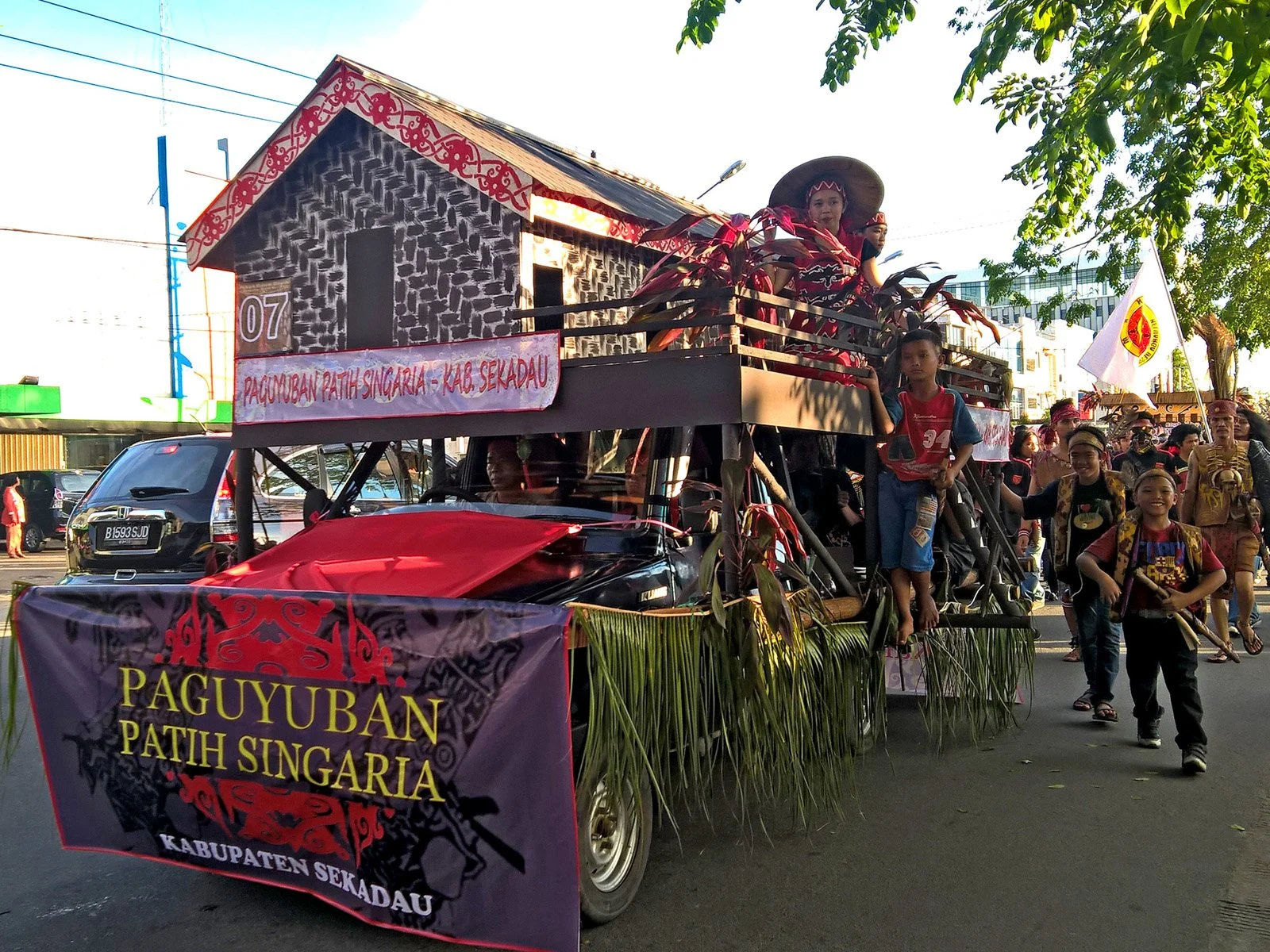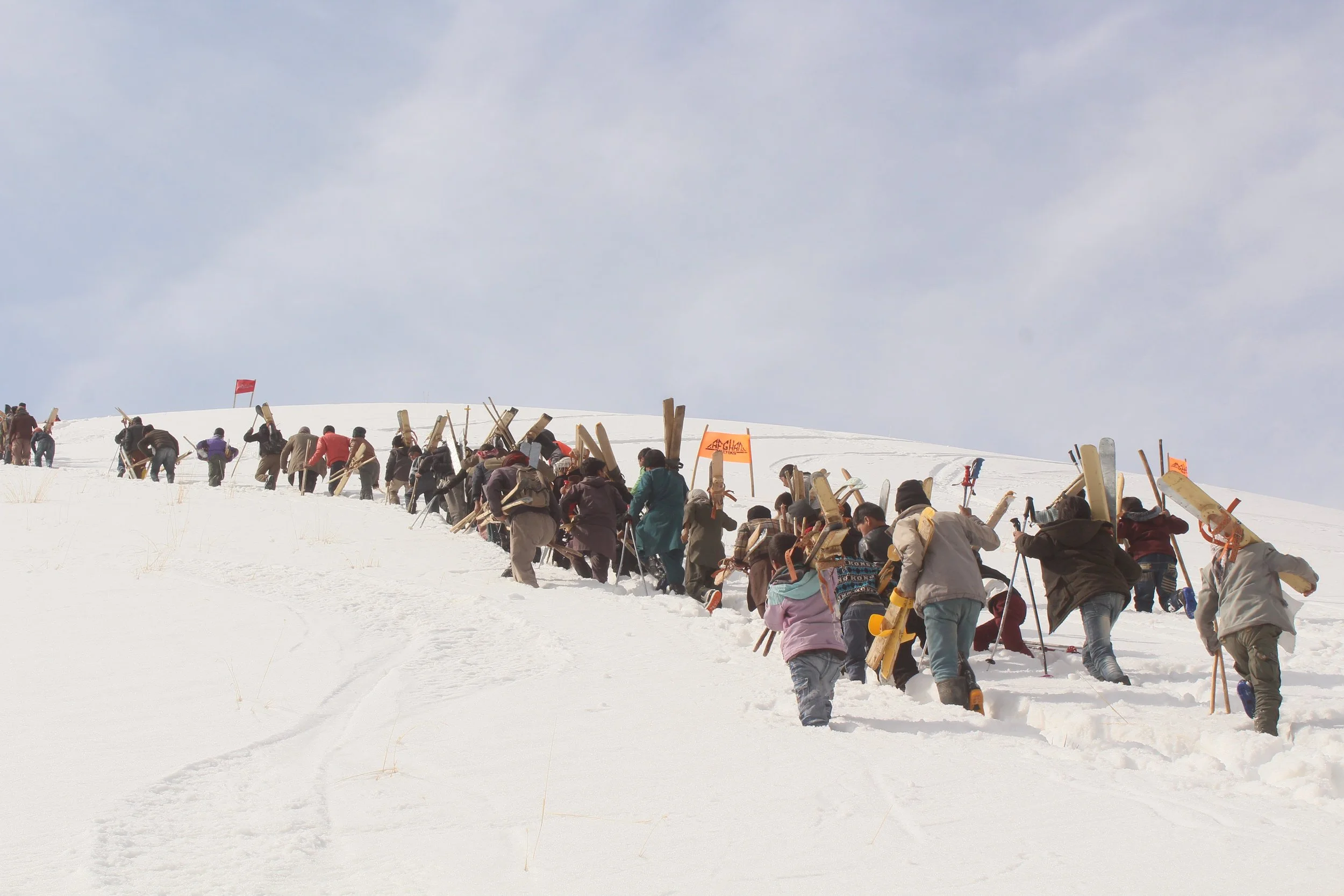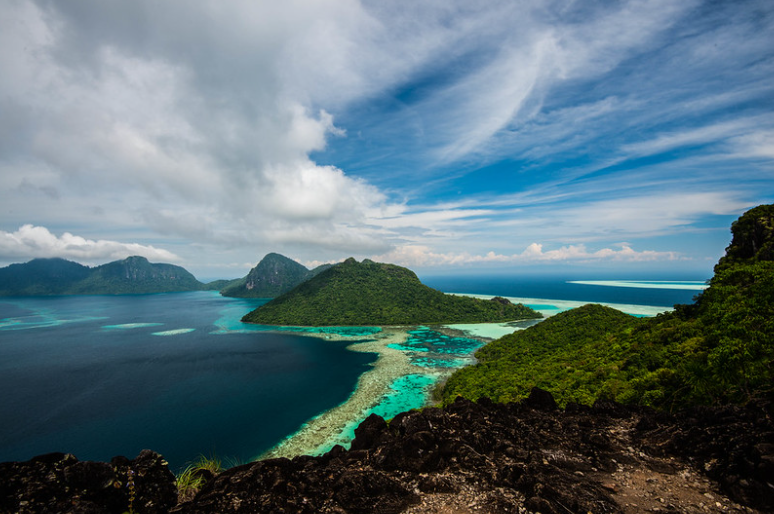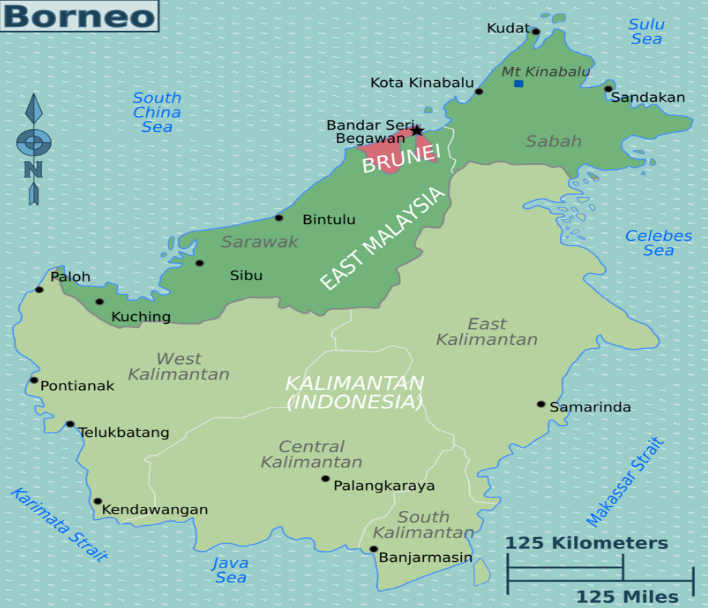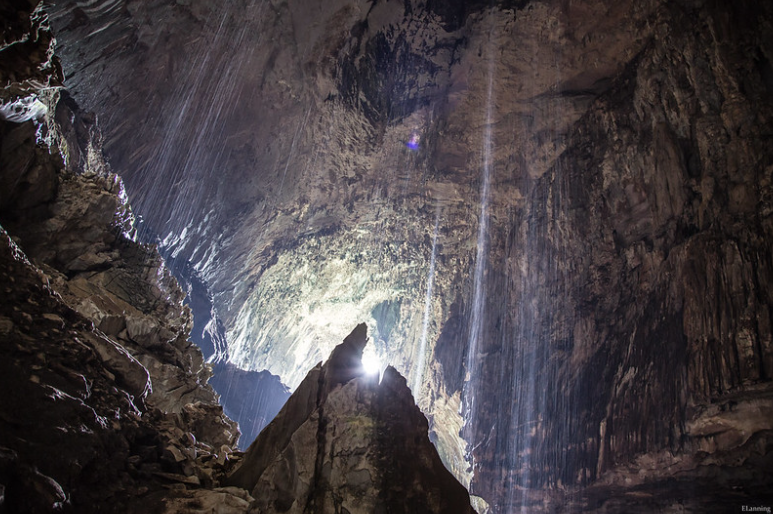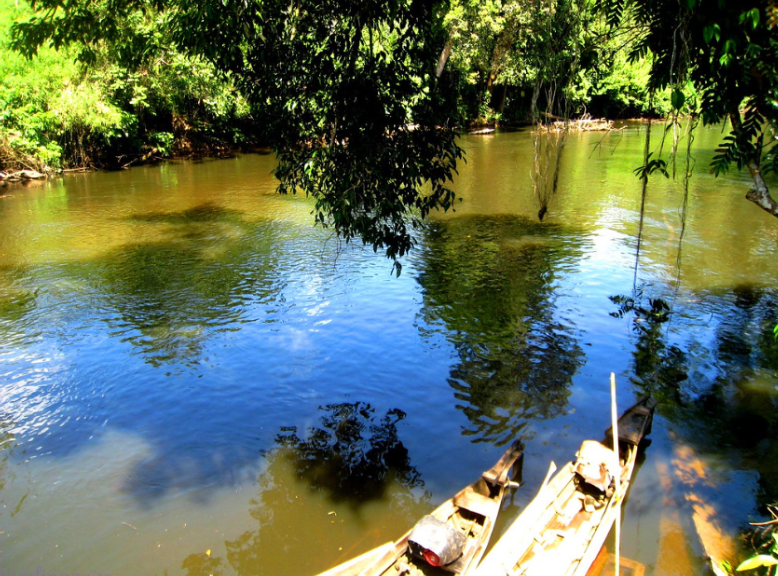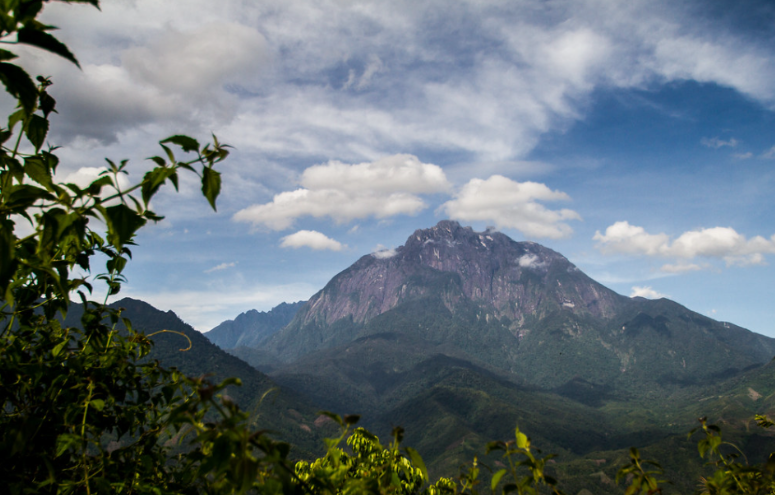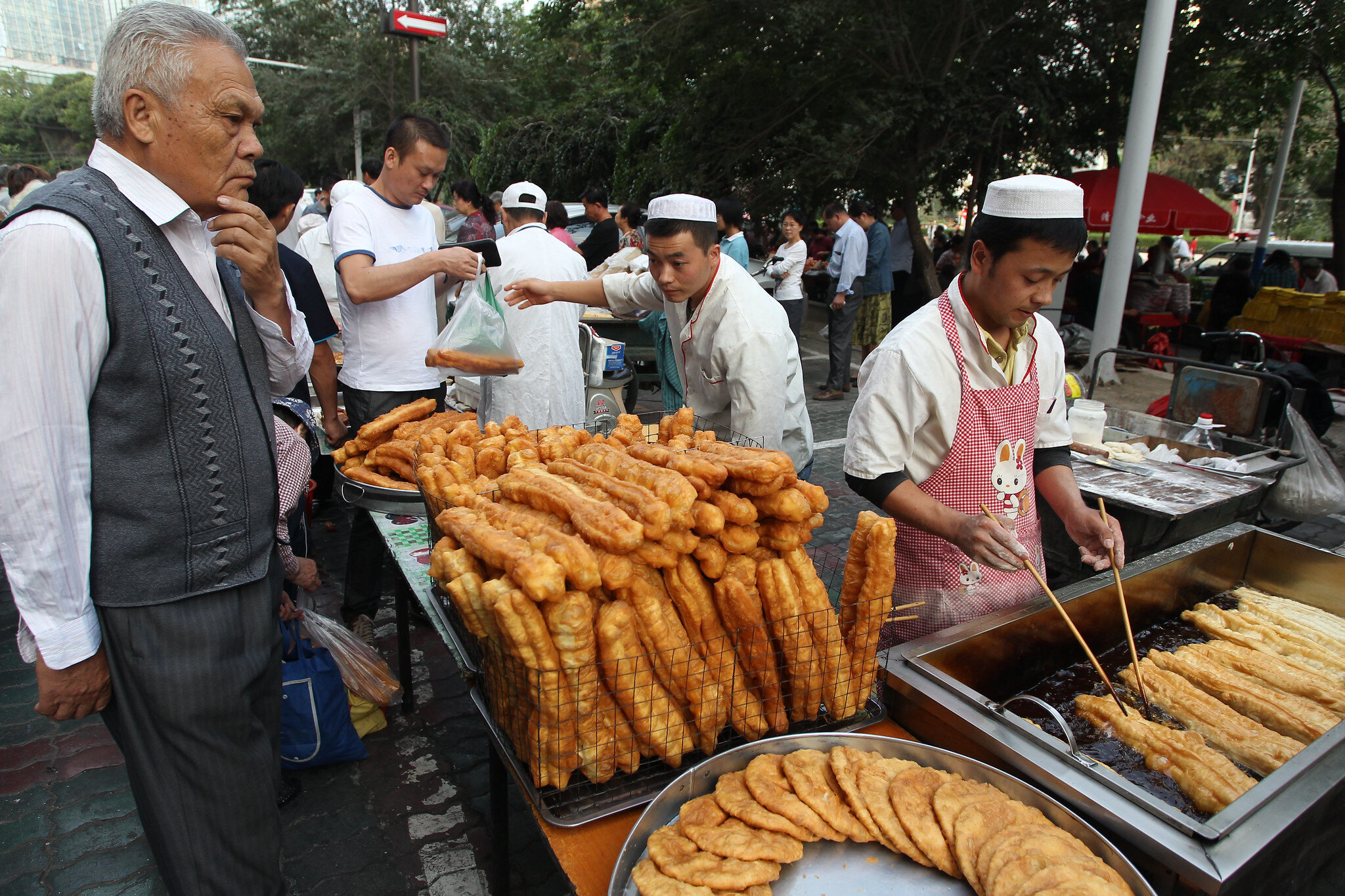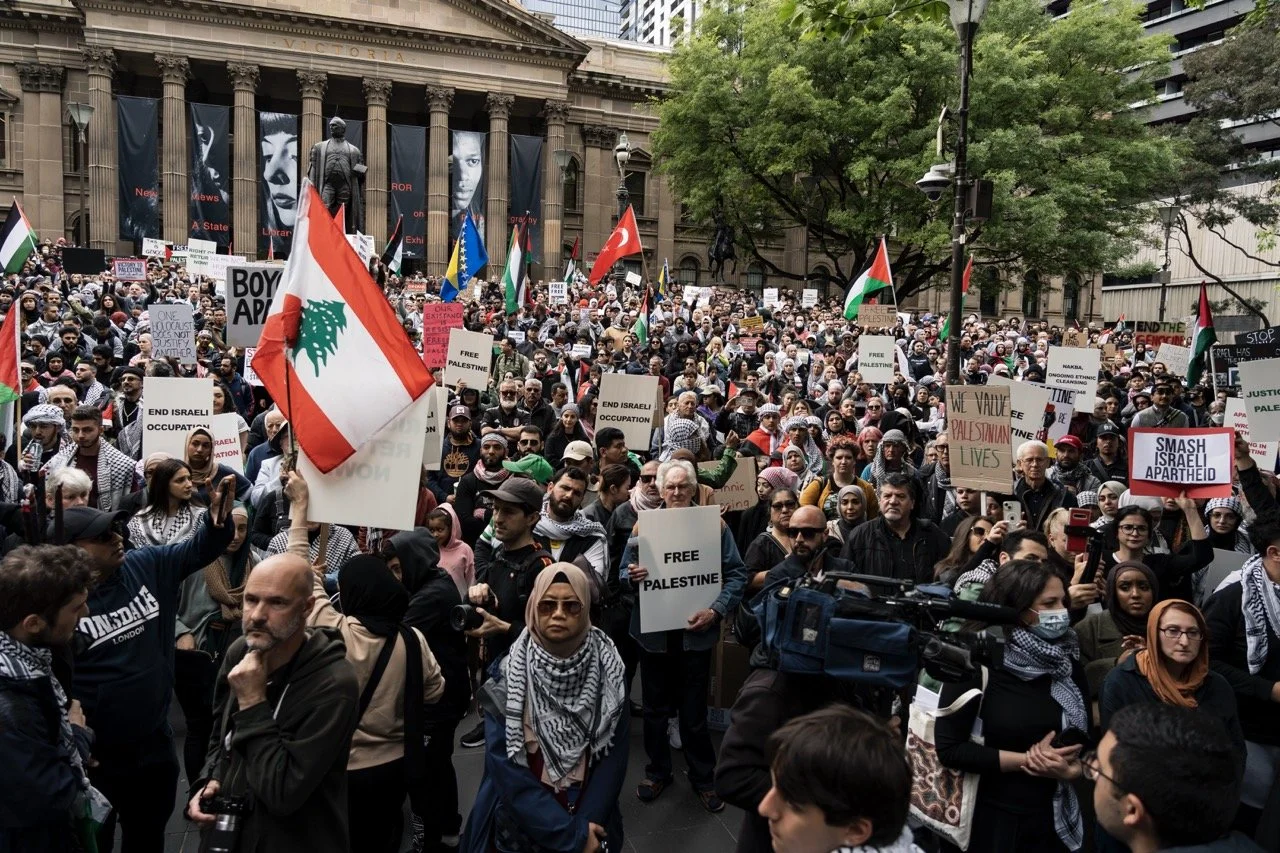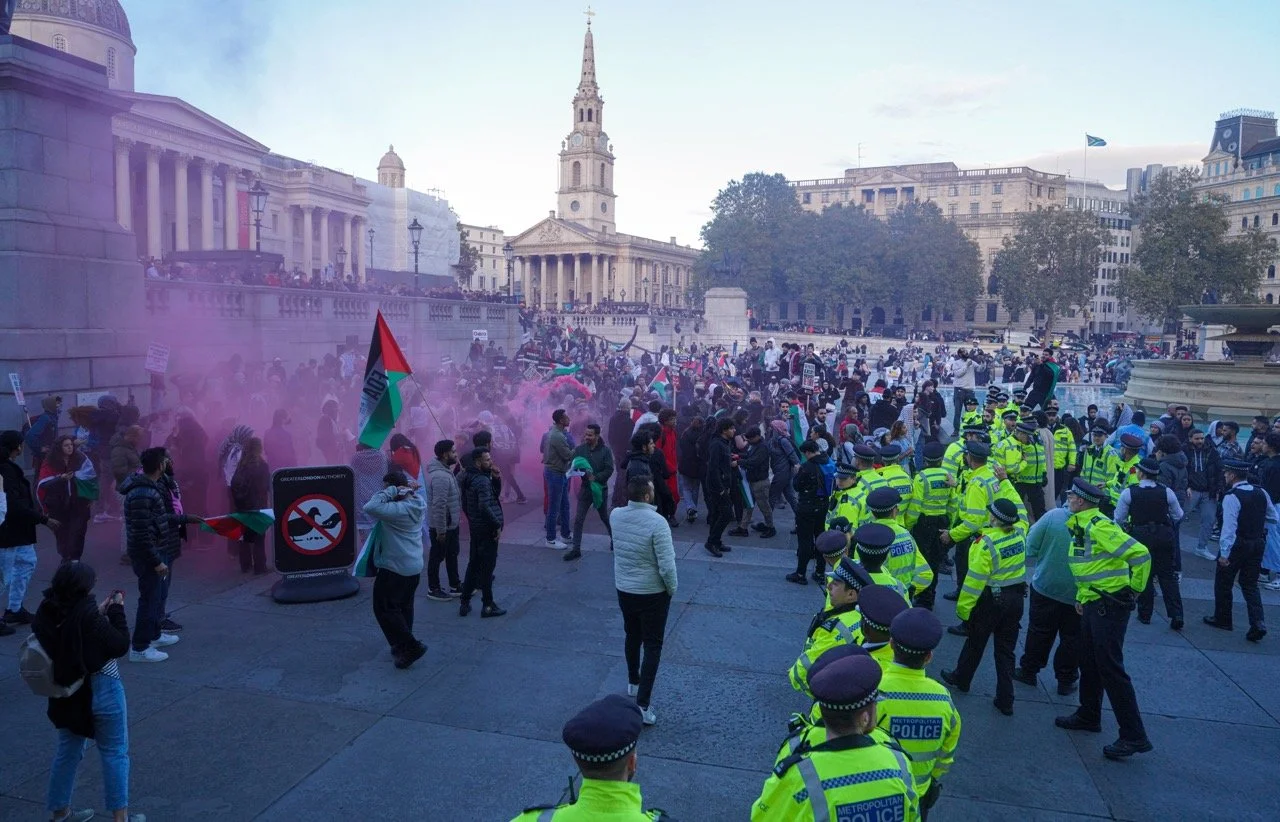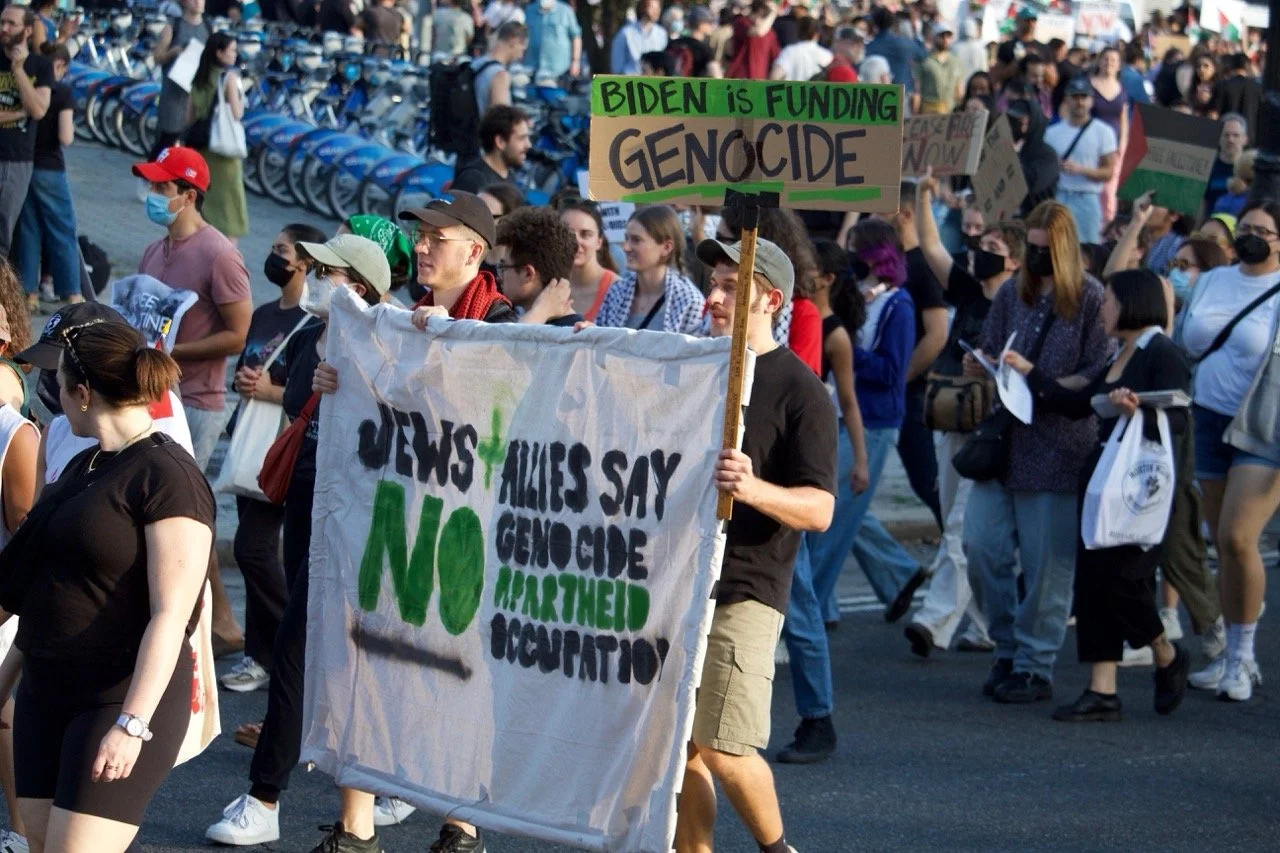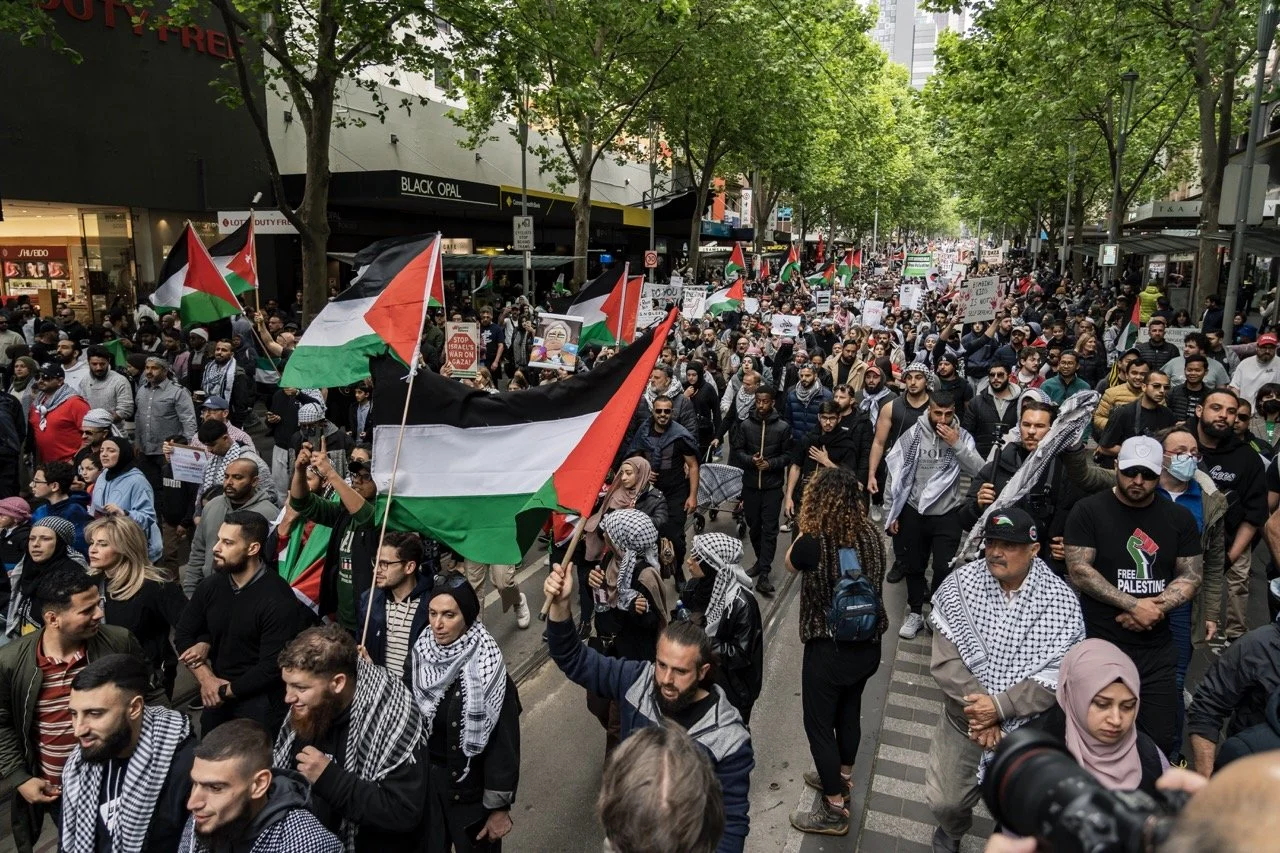With stunning architecture, beautiful natural vistas and a culture unlike anything else in the world, Bhutan truly is a once-in-a-lifetime destination.
Read MoreFrom Drought to Deluge: Afghanistan’s Flash Floods
As the 6th most vulnerable country to climate change, Afghanistan has faced intensified food insecurity following a disastrous series of floods throughout April and May 2024.
Flood relief efforts in Herat, Afghanistan. NATO Training Mission-Afghanistan. CC BY-SA 2.0
Over the past few months, hundreds in Afghanistan have died due to flooding. In April 2024, at least 70 people died from flash floods throughout Afghanistan. The floods and heavy rains have also destroyed several schools and mosques, in addition to more than 2,000 homes.
Throughout May 2024, over 1,000 houses were destroyed and more than 300 people died from floods in Afghanistan. The hardest-hit provinces include Badakhshan, Baghlan, Ghor and Herat.
On May 10th and 11th floods affected over 60,000 people. The floods destroyed about 500 houses throughout Afghanistan’s Baghlan and Badakhshan provinces with 16 deaths recorded as of May 27th, 2024. Of the 16 deaths, 10 were members of the same family.
The most recent series of floods on May 18th and May 19th, 2024 took the lives of over 100 people and destroyed nearly 1,500 homes. The death toll is expected to rise as search and rescue operations continue.
Because of climate change flooding has increased, and Afghanistan is not the only country facing destructive floods in May 2024. Over the last month, Afghanistan, East Africa and Brazil have been hit with flooding in the wake of torrential rains. Climate change contributes to increased rainfall and flooding because of hotter climates contributing to snow and ice melt and intensified weather fluctuations.
In Afghanistan, the high number of floods and casualties throughout the first half of 2024 followed a dry winter that left the ground unable to adequately absorb the abnormally high rainfall. Afghanistan’s average temperature has increased by about 1.8°C since 1950. Unusually warm temperatures have exacerbated the problem, as snow melts prematurely into the rivers.
Considering flooding is expected to increase throughout the coming months because of the erratic weather spurred by climate change, there is a need for more investments in infrastructure, specifically climate adaptation projects.
Organizations like the UN Development Programme and other UN agencies are dedicated to supporting Afghanistan in risk management, climate resilience and improved resource management.
GET INVOLVED
Emergency assistance is needed by the 38 million people throughout Afghanistan. As the floods have rendered many areas inaccessible by ground transportation, organizations such as the World Food Programme have resorted to using donkeys to transport food and supplies to those in need. To support relief efforts, donations can be made to organizations like the World Food Programme and the UN Refugee Agency.
Madison Paulus
Madison is a student at George Washington University studying international affairs, journalism, mass communication, and Arabic. Born and raised in Seattle, Washington, Madison grew up in a creative, open-minded environment. With passions for human rights and social justice, Madison uses her writing skills to educate and advocate. In the future, Madison hopes to pursue a career in science communication or travel journalism.
Journey to Malaysia: The Gawai Dayak Festival
On June 1st travelers can relish in Sarawakian culture at the colorful Gawai Dayak Festival.
A Gawai Dayak float. Baka_neko_baka. CC BY 2.0
In the Iban language, Gawai Dayak means something like "Festival of the Native Ethnic Groups of Sarawak," a state in Malaysia. This festival brings communities together to celebrate the end of the rice harvesting season. Gawai Dayak is a time of gratitude and companionship where people give thanks for that year's harvests and pray for a fortunate future.
Rice agriculture is integral for many Sarawakians. By June the majority of the hard work in the rice fields is done, and Sarawakians have a period of celebration and rest until the next planting season begins in September.
Gawai Dayak festivities begin during Gawai Eve on May 31st. On Gawai Eve, locals conduct a ceremony called Muai Antu Rua to cast away negative spirits and roast rice over bamboo. During the Muai Antu Rua ceremony, unwanted items are collected from Iban longhouses and used in a miring, or offering ceremony, filled with music.
After the Muai Antu Rua ceremony, attendees await midnight when the sound of a gong kicks off Gawai Dayak. Many activities and traditions are open to locals and visitors during Gawai Dayak. During the celebrations, participants can engage in traditional dances, dance competitions, and enjoy Sarawakian delicacies such as a rice wine called Tuak, which is thought to bring long life, and rice cakes called Penganan.
Gawai Dayak is a time filled with events and activities. A popular Gawai Dayak tradition is the Kumang and Keling Gawai contests where celebrants elect the festival’s queen and king. Other common Gawai Dayak traditions include blow-pipe demonstrations and rooster fighting.
Gawai Dayak celebrations can continue for several days. During the festivities, travelers have the unique opportunity to visit the Dayak homes, which are often open to visitors during Gawai Dayak.
Many visit the Sarawakian capital Kuching to celebrate Gawai Dayak. While the official date for Gawai Dayak is June 1st, in Kuching Gawai Dayak is celebrated the week before the World Harvest Festival. These dates vary every year, but the celebration usually falls at the end of May or the beginning of June.
During the Gawai Dayak in Kuching, there is an array of theatrical and musical performances from both local and international troupes. Explorers can also discover traditional cuisine in local longhouses and experience appetizing aromas, engaging workshops and upbeat music at the Food & Craft Fiesta.
Madison Paulus
Madison is a student at George Washington University studying international affairs, journalism, mass communication, and Arabic. Born and raised in Seattle, Washington, Madison grew up in a creative, open-minded environment. With passions for human rights and social justice, Madison uses her writing skills to educate and advocate. In the future, Madison hopes to pursue a career in science communication or travel journalism.
Palestine and Picasso: The Evolution of “Guernica” as a Symbol for Peace
As an iconic anti-war symbol, “Guernica” evolves once more amid the Israel-Palestinian conflict
Guernica on display at the Museo Nacional Centro de Arte Reina Sofía. CC BY-NC-ND 2.0.
First exhibited at the 1937 Exposition Universelle, Pablo Picasso’s “Guernica” is a mural with deeply rooted political history that extends beyond the reasoning for its inception. Commissioned by the Spanish Republican government as a work of propaganda against fascism, “Guernica” was inspired by the bombing of civilians Guernica, Spain by forces allied to Hitler. Since then, the piece has become the emblem for various anti war movements, and most recently has been adopted by those in support of Palestine.
After being exhibited at the fair in 1937, in 1939 “Guernica” made its way across various U.S. cities, and eventually was housed in the Museum of Modern Art in Manhattan for 41 years until it returned to Spain in 1981. The mural was a formidable inspiration for many American artists, such as Jackson Pollock.
Moreover, the Art Workers Coalition, a group of artists, museum staff, critics and writers, adopted “Guernica” as part of their movement against American involvement in the Vietnam War. Throughout the 60s and 70s, the group created posters featuring the mural to use alongside various slogans like, “Stop the war in Vietnam now!”
In the decades since the Vietnam War, “Guernica” has been at the root of various different protests, and was even on one occasion vandalized with the words, “kill lies all.” Most recently, the piece has been integrated into the movement for solidarity with Gaza.
This past December, a protest held at the Pasialeku Market Place in Guernica was organized by the Guernica-Palestine Citizens’ Initiative. Thousands assembled at the market and when aerially viewed, created a mosaic of the Palestinian Flag and a section of “Guernica.” The location of the protest was intentional, designed to draw similarities between the current conflict in Palestine and the civilian bombing in 1937 that served as the initial catalyst for the piece.
Though not directly related to the painting, Guernica is also a non profit literary magazine dedicated to art and global politics. The magazine features a plethora of Palestinian writers, as well as pieces on addressing the nuances of this conflict.
Recently, however, the outlet is facing backlash for releasing an article by Joanna Chen in its March issue, entitled “From the Edges of a Broken World.” The article’s publication resulted in mass resignation of the magazine’s editors. In particular, people had issues with the following: “A neighbor told me she was trying to calm her children, who were frightened by the sound of warplanes flying over the house day and night. ‘I tell them these are good booms.’ She grimaced, and I understood the subtext, that the Israeli army was bombing Gaza,” which could be interpreted as approving of the bombardment.
Some regarded the piece as “white colonialism masquerading as goodness,” in reflection of Chen’s British origins. However, in light of the controversy, many readers seeking out the essay found no problems with its content. April Zhu, a senior editor, wrote that she believed the article did not align with an “earnest, urgent, and risky resistance to U.S. imperialism and all others,” which she felt Guernica, the magazine, embodied and was founded on.
Although Guernica’s editor-in-chief, Jina Moore, resigned on April 5 amid the backlash, she maintains that the article aligns with what the publication is known for. In her statement of resignation, she said, “I saw the piece as an example of the difficult work that Guernica is known for: capturing, with complexity and nuance, how such violence is normalized, and how a violent state extracts complicity from its citizens.” Ultimately, her decision to resign reflects her support for the article, despite the magazine maintaining its decision to retract the piece. Aligned with the history of the painting, Guernica as a magazine shows that voices can diverge, even with the goal of peace at their roots.
Nicola DeGregorio
Nicola is studying English Literature at George Washington University, where she also reports for the student newspaper, The Hatchet. Nicola's passion for literature and writing has sparked an interest in exploring the broader context surrounding written texts. Researching and writing for Catalyst Planet allows her to investigate nuanced issues that intersect with her interests in art history, culinary practices, and cultural traditions.
A Festival of Flight: Explore Japan’s Hamamatsu Kite Festival
Join more than 1.5 million people in May to celebrate the Hamamatsu Kite Festival.
Kites flying during the Hamamatsu Kite Festival. Shizuoka Prefectural Tourism Association. CC BY-SA 2.1 JP
The origins of the Hamamatsu Kite Festival date back more than 450 years. In Japan, kites have been used for both practical and celebratory purposes for over 1,000 years. During the Edo era, kites were flown to celebrate the birth of a first-born son. This tradition then developed into the Hamamatsu Kite Festival where all children are celebrated.
At the beginning of May during Golden Week, Hamamatsu’s skies are filled with over 100 vibrant, traditional kites. The designs of the kites in the Hamamatsu Kite Festival symbolize children and traditions from each town in the district of Hamamatsu. The kite fliers then partake in an aerial battle, attempting to sever each other's kite strings.
As dusk falls, the festivities move from the beach to the city center where the streets come alive with dance and musical performances featuring bells and drums. The traditional music follows nearly 100 artfully decorated floats as they travel through the streets of Hamamatsu. The floats carry children in customary clothing and are pulled by cheering adults with lanterns and flags in hand.
Some floats are over 100 years old, and travelers can learn about their history at the plaza between the JR-Hamamatsu and Shin-Hamamatsu train stations where a few floats are displayed throughout the day. There are three parade routes, so for those hoping to see all the floats it is recommended that they choose a different route each night.
The location of the kite battles on the Pacific coastline allows travelers easy access to other nearby marvels, such as one of three of Japan’s major sand dunes. The Nakatajima Dunes, known as a famous hatching ground for loggerhead sea turtles, can be found near the kite battles, and are surrounded by coastal forests.
Not only home to its eponymous Kite Festival, the city of Hamamatsu is a destination known for its diverse landscapes and impeccable craftsmanship. Along with the coastline, Hamamatsu boasts mountains, a river and Lake Hamana, the birthplace of Japan’s eel-farming industry. Energetic travelers can participate in many activities at Lake Hamana, including windsurfing, swimming and biking.
Nature lovers will feel right at home among thousands of plant species at the Hamamatsu Flower Park. History buffs can learn about the city’s musical history at the Hamamatsu Museum and explore Hamamatsu Castle.
Hamamatsu is easily accessible from Tokyo. Travelers can take a bullet train from Tokyo Station to Hamamatsu Station in as little as 100 minutes.
Madison Paulus
Madison is a student at George Washington University studying international affairs, journalism, mass communication, and Arabic. Born and raised in Seattle, Washington, Madison grew up in a creative, open-minded environment. With passions for human rights and social justice, Madison uses her writing skills to educate and advocate. In the future, Madison hopes to pursue a career in science communication or travel journalism.
Ski Trips Make a Comeback in Afghanistan
Untamed Borders navigates powder and a new administration as adventure enthusiasts transcend cultural and geographical borders
Tourist Skiing in Afghanistan. Neil Silverton
Afghanistan’s ski slopes have witnessed the return of tourists for the first time since the new Taliban government came into power in 2021. Untamed Borders is a UK based travel company, formed in 2008, that focuses on providing travel opportunities to some of the world's most interesting and inaccessible places. In 2011 it pioneered excursions to Afghanistan, and has recently decided to resume its trips to the non-traditional ski tourism destination.
The group sponsored onetrip in the winter of 2024 that lasted from February 22nd to March third. It began in Islamabad, Pakistan and ended in Kabul, Afghanistan. It was a magnet for those looking to experience the region’s rugged yet beautiful landscape. Skiers started in Pakistan, where they received visas, before flying to Kabul and driving to Bamian to spend four days skiing.
Group Skiing in Afghanistan. Ana Tasič, Untamed Borders
In 2025, the company is set to continue its trips to Afghanistan. For this upcoming year the trip will be set in the Bamian Province once again, with skiing taking place in the Koh e Baba Mountain range. Similar to past trips, travelers are expected to end in Kabul and begin by venturing through Islamabad and Peshiwar, Pakistan. Skiers will have the opportunity to be led by local guides, who will help them explore Afghanistan’s popular slopes and to experience backcountry skiing on routes that may have never been skied before. Travelers will additionally have the opportunity to visit the remains of Bamian’s famous Buddha statues, the ancient city of Shahr e Zohak and take part in the Afghan Peak Ski Race.
Ana Tasič, an international guide for Untamed Borders, emphasized the beauty of the trip to Bamian Province, highlighting the drive through the outskirts of the snowy Hindu Kush Mountains. She explained that it typically takes around four to six hours to get to the Province but that “the journey through the mountains is spectacular.”
Afghan Peaks Ski Race. Afghan Peaks Charitable Trust.
Each year, the annual ski trip run by Untamed Borders coincides with Afghanistan’s annual Afghan Peak Ski Race. International groups will be offered the opportunity to take part in it alongside locals. The race typically includes two different types of skiing. One race is for people using wooden skis and the other is for those using conventional skis. The competition allows people of all ages to compete, but has faced some challenges that allow women to participate as a result of the Taliban taking over. Tasič, a former teacher of the ski club for girls, mentioned the changes in government over the past couple of years that have prevented the participation of women.
“We can’t do anything with women in sports anymore, so this has definitely changed but there’s not much that we can do about it. We’re hoping that this changes in the next few years,” she said.
The new regime in Afghanistan has not created the need for Untamed Borders to up security considerations. Because the Taliban now run Afghanistan there is less of a worry over unpredictable attacks than before, although getting into the country has become complicated. While some changes have been made in regards to travel planning, Tasič reassured those considering the trip that although “a lot has changed in the last eight years, one thing that stands out is the hospitality of the people there.” She mentioned how the trip is an opportunity for travelers to not just meet locals but to spend a week with them and get to see how they live.
“We get to experience Afghanistan in a way that most people don’t. It’s not just a ski trip, but it’s also a cultural and hospitality trip,” Tasič said.
TO GET INVOLVED
For the 2025 trip, those interested can find more information on Untamed Borders’ website. The trip to Afghanistan costs $2,850 USD and dates are not yet finalized, but when they are they will be posted to the same site for travelers to easily access.
Mira White
Mira is a student at Brown University studying international and public affairs. Passionate about travel and language learning, she is eager to visit each continent to better understand the world and the people across it. In her free time she perfects her French, hoping to someday live in France working as a freelance journalist or in international affairs.
Beyond the Quakes: Taiwan’s Earthquake Preparedness
Despite being hit with a 7.4 magnitude earthquake during rush hour on April 3rd, 2024, Taiwan has emerged largely unscathed. Why is that?
A seismogram of the April 3rd, 2024 earthquake in Taiwan. James St. John. CC BY 2.0
On April 3rd, 2024, the strongest earthquake in about 25 years rocked the streets in and around Hualien on the east coast of Taiwan, followed by hundreds of aftershocks. While the search for survivors remains underway, so far 13 people have been found dead, and nearly 1,000 people have reported injuries. While any number of deaths and injuries is tragic, these figures are minuscule compared to the near 2,500 dead and 100,000 injured during the 7.7 magnitude earthquake that struck in 1999 and left approximately 50,000 homes destroyed.
Considering its location along the Ring of Fire and the presence of three seismic belts in the country, Taiwan has a long history of earth-shaking events. The Ring of Fire refers to a fault line around the Pacific Ocean that is home to a majority of the world’s earthquakes. Because of this, Taiwan records an average of about 2,200 earthquakes every year, with a record of nearly 50,000 during 1999. Taiwan’s mountains then amplify the impact of earthquakes, which resulted in the landslides that accounted for most of the deaths on April 3rd.
Because of this susceptibility and catastrophic earthquakes in the past, Taiwan has developed some of the best earthquake preparedness techniques in the world. Following the devastating Chi-Chi earthquake in 1999, the Taiwanese government began reforming construction regulations. This included seismic retrofitting in buildings and infrastructure across the country and the prosecution of inadequate construction practices. Years of experience have also resulted in efficient emergency response, aided by surveillance cameras and social media used to identify locations requiring aid.
Educating the public has been another initiative to prevent deaths during earthquakes and aftershocks. In addition to public awareness campaigns, the Central Weather Administration frequently publishes resources including information and tips surrounding earthquake preparedness. The Central Weather Administration has also run a real-time seismic network since 1994, which tracks data and notifies the public of seismic activity through an early warning system. The data collected by the seismic network is also used to update building codes.
GET INVOLVED
Ways for people to support Taiwan’s emergency response and earthquake preparedness include donating to and supporting organizations such as the Red Cross, Taiwan Root Medical Peace Corps and Peace Winds America.
Madison Paulus
Madison is a student at George Washington University studying international affairs, journalism, mass communication, and Arabic. Born and raised in Seattle, Washington, Madison grew up in a creative, open-minded environment. With passions for human rights and social justice, Madison uses her writing skills to educate and advocate. In the future, Madison hopes to pursue a career in science communication or travel journalism.
Underwater Paradise: Raja Ampat, Indonesia
With over 70% of the Earth covered by water, it’s only logical for the planet’s greatest beauty to lie beneath the waves. Raja Ampat holds a special place in the hearts of divers and naturalists alike.
Wayang Island within Raja Ampat. Elias Levy. CC BY 2.0.
Situated northwest off of Papua, Indonesia’s most eastern island, the Raja Ampat archipelago is heralded as a top-tier site for scuba diving and marine biodiversity. Raja Ampat comprises over 28,000 square miles of ocean and hundreds of cays and shoals still to be discovered. Plate tectonics exposed ancient limestone seabeds to tidal erosion which yielded a series of islands seeming to levitate above the waves. As the archipelago straddles the Earth’s equator, it naturally experiences a tropical climate.
But Raja Ampat’s most signature feature is its sheer scope of species diversity. Home to at least 75% of the world’s hard corals and at least 1,500 different species of fish, Raja Ampat is considered the global epicenter of marine animal diversity. Due to a confluence of warm, shallow water and nutrient-rich currents from the Pacific and Indian oceans, Raja Ampat has thrived for decades as a haven for endangered aquatics. A slew of rare sea species from dugongs and blue whales to dolphins and leatherbacks live in relative geographic isolation and pristine marine ecosystems.
Northern Raja Ampat
Marine biodiversity is unmatched within Raja Ampat. Nazir Amin. CC BY 2.0.
The northern islands of Gam, Kri, Waigeo and Batanta are bounded by the Dampier Strait. It serves as a popular entryway to Raja Ampat thanks to the city of Sorong on the west coast of Papua which hosts its own airport. With mainland access via ferries, most visitors flock to the north to dive at famous sites such as Cape Kri, Blue Magic and Manta Sandy.
Cape Kri is a renowned hotspot for marine biodiversity. Once recorded as the site with the highest quantity of distinct fish species observed in a single dive, visitors can expect to see reef sharks, moray eels, turtles, Humphead wrasse, cuttlefish, porcupinefish, crevalle jack, snapper and barracuda.
Blue Magic offers a variety of soft and hard coral reefs to check out. Though divers will face strong currents in the water, the struggle is worth the chance to meet dogfish tuna, giant trevally, spanish mackerel, bumphead parrotfish and even octopi.
Manta Sandy is a shallow site teeming with plankton, and of course, ocean manta rays. Divers must try their luck to encounter the rare black manta.
South Raja Ampat
A Wobbegong shark. Nazir Amin. CC BY 2.0.
South Raja Ampat is noticeably inaccessible to the lay visitor as overnight ferries must be taken from Sorong to reach this remote area. However, the reefs in South Raja Ampat are picturesque, with premier visibility for pygmy seahorses, colorful nudibranchs and other wowing wildlife.
The island of Misool is the pinnacle of biodiversity conservation, as much of the area is protected as part of the Misool Marine Reserve. There’s only one option for overnight lodgings: the Misool Eco Resort, an eco-friendly hotel dedicated to conservation and sustainability. The resort’s founders dedicate a portion of both their profits towards biodiversity recovery; there’s been a 250% increase in local biomass and a doubling of reef fishes within six years. Visitors are welcome to trek or boat to neighboring islands for beautiful beaches, native seabirds and rock petroglyphs dating back 4,000 years.
Hundreds of reef fish are visible from above the water’s edge. Nazir Amin. CC BY 2.0.
Raja Ampat’s natural beauty belies political and economic trouble.
Though visitors will certainly enjoy Raja Ampat’s scenic environments and exotic wildlife, they may feel the effects of local turmoil.
In 1961 the people of West Papua, an area which includes Raja Ampat, voted to become a part of Indonesia in a much disputed referendum. However, a pro-independence movement has emerged throughout Papua, eliciting police and military crackdowns alongside communal tensions. Furthermore, around 9,000 of Raja Ampat residents live in poverty, lacking sanitation facilities and healthcare. Clean drinking water is imported into the islands approximately once a month; there is no electrical or telecommunications infrastructure available for most villagers. Most inhabitants either fish or mine to earn their living, and often incur debts to small businesses for consumer goods and fuel prices. Raja Ampat’s ecotourism industry is partnering with local residents to promote their security and welfare.
Rohan Ratogi
Rohan is an engineering graduate from Brown University. He is passionate about both writing and travel, and strives to blend critical thinking with creative communication to better understand the places, problems, and people living throughout the world. Ultimately, he hopes to apply his love for learning and story-sharing skills to resolve challenges affecting justice, equity, and humanity.
Women Tuk-Tuk Drivers in Cambodia Fight Discrimination
Women in Cambodia fight discrimination to become Tuk-Tuk drivers as global corporations, such as Uber and Lyft, implement initiatives to promote the safety of female and non-binary drivers and passengers.
Read MoreThe Rules of War in the Israel-Hamas Conflict
Human rights organizations report on dire humanitarian conditions in Israel and Palestine, alleging violations of international law.
London Demonstration for Palestine. Alisdare Hickson. CC BY-SA 2.0 DEED
Since the escalation of violence in the conflict between Israeli forces and Palestinian armed factions, alleged violations of International Humanitarian Law (IHL) have surfaced. Both sides have faced criticism regarding allegations that may constitute a breach of IHL.
The United Nations Office for the Coordination of Humanitarian Affairs (OCHA) describes IHL law designed to safeguard civilians and prohibit indiscriminate attacks against them. This provision is binding on all armed groups involved in a conflict, regardless of reciprocal actions. The OCHA, with this law in mind, has drawn up potential allegations against Israeli and Palestinian combatants, which take aim at Israeli military tactics and use of prohibited weapons as well as Palestinian armed groups’ conduct.
With the intensification of the violence and the number of Palestinians who have been displaced, there has been rising criticism regarding the weaponry and tactics that Israel has employed against Palestine. More serious allegations include the use of white phosphorus in well-populated areas of Gaza, which has harmful effects on human tissue. This, among other tactics such as blockades and airstrikes, have resulted in high civilian casualties, raising questions with regard to the potential for indiscriminate suffering and collective punishment.
Palestinian actors have also breached rules of IHL. Human Rights Watch reports that armed groups, such as Hamas, have used indiscriminate rocket firing into Israeli territories, giving reason to accuse those involved of targeting Israeli civilians specifically, warranting a war crime.
Apart from OCHA, other human rights organizations have also begun to contend the violence as war crime and collective punishment. Amnesty International, an organization focused on human rights, has found Israel’s system of governing Palestinians in Israel and the Occupied Palestinian Territories to be oppressive and discriminatory. Citing the forced eviction of thousands of Palestinians, use of arbitrary detention by Israeli authorities and torture or ill-treatment of civilians, Amnesty has expressed the belief that Israel’s actions constitute a system of aparthied under international law.
The International Federation For Human Rights (FIDH) has additionally expressed concern over the targeting of civilians and human rights violations in Israel and the occupied territories. From the gathered evidence of human rights abuses, FIDH has acknowledged a tightened system of apartheid by Israel, involving the displacement of Palestinians in the West Bank, denial of freedom of movement and incidents of torture, all amounting to crimes against humanity. As of November 2023, Israel held close to 7,000 Palestinians that, with restrictions on water and overcrowded conditions, subjected detainees to what is now being considered ill-treatment and collective punishment. Tal Steiner, executive director of the Public Committee Against Torture in Israel, commented on the treatment of Palestinian detainees, saying that “Punitive detention conditions, arbitrary violence and humiliation of detainees and the intentional infliction of torture, should all be absolutely prohibited and unacceptable.”
The International Criminal Court (ICC) has become involved with the conflict as a potential route for prosecuting those accused of war crime and human rights abuses. Israel has argued that the ICC does not have jurisdiction because of its views regarding Palestine’s statehood, however, the mandate by ICC has gathered international support as viable protection against war crimes. The collection of evidence gathered by human rights organizations has aided in the investigation by the ICC, and the pursuit of accountability in this current situation has been viewed as one of the most crucial steps in ending the violence.
Both the Israeli and Palestinian governments and terrorist organizations like Hamas are responsible for upholding human rights, regardless of the applicability of international law in the case of the conflict between the two. Those infractions adjudicated as war crimes may be subject to legal repercussions, but as the international community awaits further development, accountability as an avenue for resolution remains integral.
Mira White
Mira is a student at Brown University studying international and public affairs. Passionate about travel and language learning, she is eager to visit each continent to better understand the world and the people across it. In her free time she perfects her French, hoping to someday live in France working as a freelance journalist or in international affairs.
Dive into Songkran: The Thai New Year Festival
Want to experience a month-long celebration featuring water battles in the streets and other amazing festivities? Discover the Thai Songkran Festival.
A water fight during the 2015 Songkran Festival in Thailand. Sano Rin. CC BY-NC 2.0
Thousands of international travelers are drawn to Thailand each year to celebrate the Songkran Festival, also known as Thai New Year. Songkran has been celebrated for thousands of years, but this year is special. In 2023, UNESCO (United Nations Educational, Scientific and Cultural Organization) added the festival to the Intangible Cultural Heritage of Humanity list. In honor of this recognition, the Thai government plans to hold Songkran festivities for the entire month of April 2024, instead of the usual three-day period between April 13th and 15th.
The Songkran Festival has evolved over the years. The first recorded reference to the holiday dates back to the 15th century, with some scholars theorizing that it was derived from the Indian Holi Festival. The Sanskrit word for “movement” is the root of the term “Songkran,” which refers to the movement of the sun from the astrological months of Pisces to Aries during April.
Water is a focal point of many Songkran Festival traditions, symbolizing cleansing and good fortune for the coming year. Rod Nam Dam Hua is a tradition in which youngsters pour scented water on their elders' hands to express gratitude. Scented water is also sprinkled on Buddha statues to bring prosperity, and respect for ancestors is shown by bathing their urns. According to some scholars, the notorious water battles began to promote tourism during the 20th century. Other traditions include offering food to Buddhist monks and bringing sand pagodas to local temples to replenish the sand tracked out of the temples throughout the year.
April is the hottest part of the year in Thailand. If you want to beat the heat by getting soaked during the water battles, check out streets like Khao San Road in Bangkok, or other popular walking streets in cities like Pattaya or Chiang Mai. As locals and tourists drench each other with buckets and colorful squirt guns, music and the aromas of street foods like Thai fried chicken (called Gai Tod) fill the air.
If water fights aren’t your thing, April is still a great time to experience Thailand. Travelers can experience a variety of activities from Thai beauty pageants to boat races. Thailand's natural environments boast breathtaking destinations from white sand beaches featuring coral reefs to lush hiking trails. For those yearning to see some historical wonders, Thailand offers ancient destinations like the city of Ayutthaya and the Phanom Rung temple complex. You can then recover from a long day of fun with revitalizing Thai dishes such as beef curried noodles, called Christao Khao Soy Nuea, or Bangkok Glutton Som Tum, a Green Papaya salad.
As Thais gear up for this year's Songkran Festival, it is important for travelers to stay up to date on Covid-related travel protocols and other ways to be respectful during the celebrations. For all the water-loving cultural fanatics, the 2024 Songkran Festival awaits you.
Madison Paulus
Madison is a student at George Washington University studying international affairs, journalism, mass communication, and Arabic. Born and raised in Seattle, Washington, Madison grew up in a creative, open-minded environment. With passions for human rights and social justice, Madison uses her writing skills to educate and advocate. In the future, Madison hopes to pursue a career in science communication or travel journalism.
The War on Journalists in the Israel-Hamas War
The Israel-Hamas War is the deadliest conflict for journalists in 30 years, at least 83 journalists have been confirmed dead.
Al Jazeera’s Gaza crew and journalists. Global Panorama. CC BY-SA 2.0 DEED
Since the start of the Israel-Hamas war on October 7, there has been an unprecedented amount of journalist death and injury. Facing high risks to cover the unfolding conflict without guaranteed safety, this war has claimed more journalists than any other in the last 30 years.
As of January 24, at least 83 journalists and media workers have been confirmed dead. Among them, 76 were Palestinian, four Israeli and three Lebanese, according to the Committee to Protect Journalists (CPJ). Similarly, the International Federation of Journalists (IFJ) reported an estimated 94 journalists that have been killed and 400 others imprisoned. IFJ has called on the International Criminal Court (ICC) prosecutors to investigate the deaths of these journalists, though Israel has argued that the ICC has no jurisdiction in the conflict because the Palestinian territories are not an independent sovereign state.
The Israel-Gaza war has become the most deadly conflict for members of the press. In 2022, 15 journalists were killed in Ukraine, 30 in Latin America and at least five in Haiti, making the amount of journalists killed in Gaza in just a few months of war greater than all of those killed worldwide in 2022. Because of such an increase, some believe that journalists are being explicitly targeted for the information that they aim to provide to the public.
On November 21, correspondent Farah Omar and cameraman Rabih al-Maamari were killed in Lebanon by two missiles fired by an Israeli warplane. The Al-Mayadeen TV channel that the broadcasters worked for announced that they were covering back and forth fire on the Tayr Harfa/Al-Jebin triangle in Southern Lebanon between Israeli forces and Hezbollah when they were hit. In a statement, the TV channel said that it believes its journalists were deliberately targeted for its — the channel’s — pro-Palestinian views. In a separate statement, Lebanese Prime Minister Najib Mikati alleged that the Israeli strike was an attempt to silence the media.
Consequently, the CPJ has accused the Israeli military of targeting journalists in Gaza. One instance includes Al Jazeera camera operator Samir Abudaqa, who was injured during a drone strike and forced to take shelter in a UN school. Those who tried to help Abudaqa to get him to safety were shot and Abudaqa died due to his injuries.
Other journalists have reported similar instances, but where their families have been targeted. Anas Al-Sharif, Al Jazeera journalist, told the news channel of phone calls that he had received from the Israeli army instructing him to cease his news coverage and leave Gaza. Following these threats, Al-Sharif’s father was killed by an Israeli airstrike on his home. Such death and violence resulted in a report last May by the CPJ that documented a “deadly pattern” of journalists deaths by Israeli forces; a pattern of killing journalists that was observed even before the latest conflict in Gaza.
Across global media there has been outrage over a lack of accountability of Israel’s killing of journalists in Gaza. In the United States some journalists have held vigils for fallen colleagues, but there has been an overall lack of public commentary from journalistic institutions themselves. Staff at the Los Angeles Times displayed their solidarity with fellow journalists in Gaza by signing an open letter condemning the killings and criticizing Western media’s lack of coverage of Israel’s actions. The paper subsequently suspended these staff members from coverage of the war for what LA Times cited as a violation of its ethics policy. This outcome has caused some journalists to remove their names from the letter, fearing reprisal from their workplaces, and left others questioning the Biden administration's support of press freedom and Israeli accountability.
Journalists have additionally reported feeling less safe wearing a press vest and that being identified as a member of the fourth estate could make them or their families targets for Israeli forces.
These patterns of violence have left journalists in a precarious situation that has broader global implications. Without being able to report what is going on in Gaza, the role of these journalists only becomes more vital. Millions of people have relied on the accurate information provided by journalists to understand this conflict, and without them are left only with misinformation that may instead fuel it further.
Mira White
Mira is a student at Brown University studying international and public affairs. Passionate about travel and language learning, she is eager to visit each continent to better understand the world and the people across it. In her free time she perfects her French, hoping to someday live in France working as a freelance journalist or in international affairs.
5 Adventures in Borneo
Borneo, the third-largest island in the world, boasts an enriching culture and a variety of adventurous nature excursions.
Bohey Dulang—Borneo. JohnJoDeery. CC by 2.0.
Borneo, an island located in the southwestern portion of the Pacific Ocean, is the third-largest island in the world, and the only one that is shared by three countries—Malaysia, Indonesia, and Brunei. The Malaysian part of the island consists of the two states Sabah and Sarawak, with Indonesia holding sway over five provinces in what its citizens Kalimantan and Brunei possessing the smallest section of land named after the country itself. As a part of the Greater Sunda Islands group, Borneo is bordered by two other islands, Sulawesi to the east and Sumatra to the west. The island of Borneo has approximately 292,000 square miles of territory in total, and harbors a significant population of 21.26 million people. Even divided, Borneo is an intriguing and obscure place that most travelers are not aware of; its hot and humid climate makes for an ideal tropical destination. From the soaring heights of Mount Kinabalu to the mysterious depths of the Mulu Caves, the island provides many opportunities for adventurers.
Map of Borneo. Peter Fitzgerald. CC by 2.0.
Sea Diving in Sipadan Island
Scuba Diving in Sipadan Island. CC0.
Sipadan Island, located in the Celebes Sea and situated off the northeastern coast of Borneo, is renowned as one of the world's premier dive destinations, known especially for its marine biodiversity and pristine coral reefs. Diving in the waters surrounding Sipadan offers a scenic experience, where the coral gardens provide a backdrop to an incredible array of marine life. Schools of barracuda, jackfish and sea turtles are all present in these waters, so they’re easy to spot. The island's underwater landscape, featuring dramatic drop-offs and caverns, adds an element of excitement to the exploration. With its protected status as a national park under Sabah Parks, its limited dive permits and its no-fishing policy, Sipadan ensures a sustainable underwater environment, allowing divers to witness the beauty of the ocean.
Exploring the Ancient Mulu Caves
Caves of Mulu. Eric Lanning. CC by 2.0.
Exploring the Mulu Caves in Borneo involves a journey into the depths of one of the world's most fascinating landscapes. Situated in Gunung Mulu National Park, a UNESCO World Heritage Site, the Mulu Caves system is a network of limestone caverns, tunnels and chambers, shaped over millions of years. The expansive caves are full of stalactites and stalagmites, creating an otherworldly environment that transports visitors into a space of natural wonder. The Deer Cave, one of the largest subterranean passages globally, impresses with its vast chambers. Adventure-seekers can also participate in guided tours, which include crossing rope bridges and navigating through passages, providing a sense of exhilaration.
The World's Largest Floating Village in Brunei
At Kampong Ayer. Watchsmart. CC by 2.0.
Kampong Ayer, often referred to as the "The World’s Largest Floating Village," is a water town situated in the heart of Bandar Seri Begawan, the capital of Brunei. This settlement is one of the largest global stilted communities, consisting of intricately connected houses, schools, mosques and markets that rise above the Brunei River on wooden supports. The village has a history dating back centuries, with traditional wooden architecture and a lifestyle deeply rooted in the water. Approximately 13,000 people still reside in their traditional houses, and instead of using roads or cars as methods of transportation, water taxis take residents from one place to another. The water village showcases a unique way of life that one doesn’t see often, and it has endured for generations in Brunei.
Outdoor Adventures in Kalimantan
Batang Kawah River, West Kalimantan. DN.Zrr. CC by-NC-SA 2.0.
Kalimantan, the Indonesian portion of Borneo, is a treasure trove for outdoor enthusiasts seeking thrilling adventures and nature. The region is renowned for its dense rainforests, winding rivers and diverse wildlife, creating the opportunity for a variety of outdoor activities. Adventure seekers can embark on multi-day treks through the rainforests, seeing tropical flora and fauna and perhaps even getting the chance to discover orangutans. The rivers of Kalimantan offer opportunities for exciting activities such as white-water rafting, with rapids making the excursion more fun. For those seeking a more serene activity, cruising along the territory's scenic rivers on wooden boats provides a tranquil way to take in the breathtaking surroundings.
Hiking at Mount Kinabalu
Mount Kinabalu, Borneo. Paul Williams. CC by-NC 2.0.
Hiking Mount Kinabalu is an experience that beckons adventurers to the landscapes of Borneo. It is a challenging hike and rigorous pace, and usually can last around two days. As Southeast Asia's highest peak, standing proudly at 4,095 meters (13,435 feet), Mount Kinabalu dominates the Malaysian state of Sabah. The ideal time period for completing this excursion is between March and April. The ascent begins in the foothills and takes hikers through the ecosystems, from rainforests to meadows. There are even different routes you can choose to partake in, including the Ranau and Kota Belud Trails. The journey reveals panoramic views and a variety of flora and fauna—including 5,000 types of plants, 326 different birds and over 100 mammal species all on this single mountain. Mount Kinabalu, because of its partially difficult trek, is a physical accomplishment that leaves a lasting impact, making it a must-see in Southeast Asia.
Riley Baker
Riley Baker is a first-year student at James Madison University majoring in Writing, Rhetoric, and Technical Communication. She enjoys elements of storytelling and creative writing and likes listening to music. In addition, she is interested in journalistic-style writing and editing, and intends to focus on writing articles about lesser known travel locations and impactful world topics.
Meet the Women in Pink Saris Fighting Gender Discrimination in India
Pink sari-wearing and bamboo stick-wielding feminists are fighting against a culture of rape and gender inequality in India.
Sampat Pal Devi, founder of the Gulabi Gang. Iecercle. CC BY-NC-SA 2.0
India’s rape crisis was brought to light back in December 2012 when a 23-year-old female student was raped and beaten to death by five men and a teenage boy. Protesters flooded India’s capital of New Delhi and forced authorities to seek the death penalty for the perpetrators. But the crisis lingers as cases of rape and neglect by corrupt government officials still plague India, especially in rural areas.
Approximately 70% of India’s population lives outside of major cities in the rural areas where it is even harder to seek out justice in the name of the law. Uttar Pradesh state is notorious for its high rate of sexual violence against women, even being named the “rape capital of India.” According to the National Crime Records Bureau, crimes against women in Uttar Pradesh increased by 20% from 2016 to 2019.
But there is hope for Uttar Pradesh, and it comes in the form of women wearing hot pink saris and wielding large bamboo staffs called lathis. Sampat Pal Devi is the founder and was the first leader of the Gulabi Gang, which translates to the “Pink Gang.” Their pink saris represent sisterhood and unity as they come together in droves to fight corruption and to ensure the basic rights of women and poor people in rural areas.
Devi’s story began when she was a single woman living in Uttar Pradesh’s Banda district and witnessed a man savagely beating his wife. She attempted to help, but he beat her as well. She returned a few days later with five other women and beat him with lathis. The story quickly spread throughout the town and more women came to Devi for help. In 2006, after the selection of the pink sari as their uniform, they officially established the Gulabi Gang. Their initial intention was to punish abusive men and combat domestic violence, but it has expanded into a much larger movement of feminism. The Gulabi Gang now fights for socioeconomic, cultural and political equality in order to enhance the basic skills of women to develop confidence and protect themselves from abuse through sustainable livelihoods.
Gulabi Gang resting during a protest. Iecercle. CC BY-NC-SA 2.0
Fast forward 14 years since its establishment and the Gulabi Gang has grown exponentially. Almost 100,000 women and men have banded together to join what is now a mass movement in northern India. In an interview with Vice News, Devi stated that, “The purpose of the Gulabi Gang was to unite women, because until women unite, we will never get what we believe are our rights.” She spent a great deal of her time intimidating and shaming government officials into making the correct choices and abiding by the law.
Although she made many achievements, Devi was removed from her position as leader of the Gulabi Gang for alleged self-promotion at the cost of the organization’s mission. Her removal caused quite a stir until the group’s assistant commander, Suman Singh Chauhan, was elected as its next leader. Even with the change in leadership, the Gulabi Gang stands strong as the organization continues to emphasize its mission.
The Gulabi Gang not only leads and protects but also teaches women a variety of skills necessary to be independent. Through its website, the group has raised enough money to build a school in an impoverished area. In the school, girls learn how to sew in order to earn money and delay the chance of their parents marrying them off. The group’s leaders teach new members how to defend themselves with lathis in free self-defense courses. Finally, they teach the world that through common sense and compassion one can start a revolution, even when the soldiers are wearing pink.
Yuliana Rocio
Yuliana is currently a Literature/Writing major at the University of California San Diego. Yuliana likes to think of herself as a lover of words and a student of the world. She loves to read, swim, and paint in her free time. She spent her youth as part of a travel-loving family and has grown up seeking adventure. She hopes to develop her writing skills, creating work that reflects her voice and her fierce passion for activism.
The Extensive Cuisine of Chinese Muslims
From pita bread to lamb, halal Chinese food’s influences stretch from the Mediterranean to Russia and from China to the Middle East.
Street vendors feed crowds with a doughy treat in Urumqi, the capital of China’s Xinjiang Uyghur Autonomous Region. People’s Development Bank. CC BY-NC-ND 2.0.
China has around 23 million Muslims, predominantly made up of the Hui and the Uyghur ethnic groups. Chinese Islam began in 651 A.D., when Islam was first introduced to the country by Arab traders under the Tang dynasty. A diverse array of religions and cultures were brought to Tang China, including Islam, Judaism and Zoroastrianism. However, Islam was the only religion of these to make a lasting impression on the Chinese population. Chinese Islam expanded to different regions and soon developed its own local traditions and foods. The culinary wealth that sprang from Chinese Islamic heritage progressed into popular street foods and dishes still consumed by Chinese people today.
Hui Cuisine
Hui Muslims mostly occupy areas in the Ningxia autonomous region in China’s northwest. Their cuisine is called “qingzhen cai,” loosely meaning “pure truth” in Mandarin. This reflects the widely associated cleanliness of qingzhen restaurants due to their prohibition on smoking and drinking alcohol. Hui cuisine quickly spread across China due to its unique and much-loved flavors.
Close-up shot of aiwowo. Dozen Dessert. CC BY 2.0.
A decadent Hui dessert that remains popular among street vendors is aiwowo, or “love drops.” These small round buns are made of sweet glutinous rice flour and are dusted with a blend of sesame seeds, sugar and walnut kernel chips. Though aiwowo’s inspiration is from Hui cuisine, the snack has become a popular roadside treat in Beijing.
Lanzhou beef noodles in a hot and earthy broth. Language Teaching. CC BY 2.0.
Another seminal dish of the qingzhen cai tradition is Lanzhou beef noodle soup. Many consider this soup to be the most famous noodle dish in all of China. The base of this hearty dish is an aromatic beef broth boiled with cumin seeds, Sichuan peppercorns, onions, ginger, star anise and cinnamon. The fresh, chewy hand-pulled noodles are placed in the broth on a bed of beef slices and chili oil.
Uyghur Food
Uyghurs first came to China around the 3rd century A.D., and ruled over their own kingdom in the 8th century in present-day northern Mongolia. Today, Uyghur populations are concentrated in the Xinjiang Autonomous Region in far northwest China. The Chinese government has recently gained notoriety for setting up large-scale prison camps in Xinjiang, with critics calling it a “genocide” and an attempt to entirely wipe out the Uyghur populace.
Uyghurs tend to draw flavors from Central Asian, Middle Eastern and Chinese cuisines. Both the Hui and the Uyghurs base their dining experience around beef and lamb, avoiding pork due to religious purposes.
However, Uyghur foods draw far more on their Turkish influence: baked goods such as girda naan, similar to bagels, are central to their cuisine.
A vendor prepares lamb kebabs on a coal-fired barbecue for a busy night in Xinjiang. S. Tsui. CC BY-NC-ND 2.0.
In Xinjiang’s capital of Urumqi, visitors can find local vendors selling mutton kebabs, which are pieces of sheep flavored with cumin, paprika, salt and pepper, placed on a skewer and seared over smoky charcoal.
Roasted lamb from a halal restaurant in Beijing. Ulterior Epicure. CC BY-NC-ND 2.0.
Perhaps the most famous Uyghur-inspired dish is roasted whole lamb. Rubbed with a spicy menagerie of cumin, salt, ginger and pepper, the lamb is coated with a flour and yolk batter and baked in a special oven for an hour. This dish is considered a luxury that deserves only the highest-quality meat.
Pile of nang in Xinjiang. Umami. CC BY 2.0.
Another famous Uyghur staple is nang, which is reminiscent of naan bread: a flat pancake-like bread made of corn flour, wheat flour or sorghum flour. This is a building block of Uyghur cuisine, as it comes in a multitude of flavors and seasonings, from a savory sesame coating to a buttery sweet glaze.
Chinese halal food is embraced all over China today, as it continues to combine influences from around the world into culinary treats. With the expansion of Hui and Uyghur influences into Chinese food culture, the intermingling of various flavors will only broaden the appeal of this special cuisine.
Heather Lim
recently earned her B.A. in Literatures in English from University of California, San Diego. She was editor of the Arts and Culture section of The Triton, a student-run newspaper. She plans on working in art criticism, which combines her love of visual art with her passion for journalism.
Protests for Palestine and Israel Take Off Around the World
Countries across the world have taken to protest in response to the Israel-Hamas War.
Protest for Palestine in Melbourne. Matt Hrkac. CC BY 2.0
On October 7, Hamas launched an unprecedented attack on Israel from the Gaza Strip that killed more than 1,200 people. Since the assault Israel has responded with a ground invasion that has resulted in the death of more than 11,000 people in the exclave. In light of the growing humanitarian crises in Israel and Palestine, protests supporting either side in the conflict erupted globally.
In the Middle East, and particularly Egypt, pro-Palestinian rallies have broken out, expressing solidarity with the population of Gaza over the hostilities. A mass protest on October 20 resulted in the prosecution and detainment of at least 100 people at al-Azhar Mosque in Central Cairo. On October 29, thousands gathered in Islamabad, which became the largest pro-Palestine rally in Pakistan since the beginning of the war in October. Protests denouncing Israel’s aerial bombardment in Gaza have ramped up around the Middle East, particularly in Jordan. On October 13, riot police dispersed hundreds of protestors attempting to reach a border zone within the West Bank. Jordanian anti-riot police clashed with protesters again on October 18 after demonstrators planned to march to the Israeli embassy and were torching property along the way. In Africa, Israel has substantial support from the Ivory Coast and Kenya, but public sympathies have predominantly tilted toward the Palestinians.
Reactions to the war have varied across Europe. In Paris, hundreds gathered on October 12 to express solidarity with Palestinians and call for a ceasefire from Israeli strikes in Gaza. This demonstration resulted in police using tear gas and water cannons to control crowds. Across France there were around 40 other demonstrations, including one in Lyon with an estimated turnout of 5,000 people, according to French police who, again, used force to control the protest. Conversely, thousands marched in support of Israel. On October 9, a crowd gathered at Place du Trocadero for a march that rallied 20,000 people at an Eiffel Tower lit to resemble the flag of Israel.
London has also experienced thousands of pro-Palestine protests. On October 21, nearly 100,000 protestors took to the streets of Central London to call for an end to Israel’s bombing of Gaza. Hundreds more gathered in Trafalgar Square on November 5 for a sit-in that brought Oxford Circus to a standstill. On November 11, hundreds of thousands of people gathered for what became the largest pro-Palestine protest in British history. Demonstrators also expressed support for Israel in Trafalgar Square in response to the pro-Palestine demonstration a day before. The rally filled Central London Square and included posters of those who are missing, calling for the release of hostages taken by Hamas in the initial attack.
Palestine Solidarity Protestors in Trafalgar Square, London. Alisdare Hickson. CC BY 2.0
Similar to Europe, in the United States there has been widespread support for the Palestinian cause. A November 4 protest in Washington D.C. drew supporters from around the country with 300,000 people in attendance, making this the largest pro-Palestine mobilization in U.S. history. Other cities across the country have also demonstrated support for Palestine: hundreds marched in Boston on October 16, over 1,000 people attended a demonstration in Chicago on October 18 and a peaceful march on November 7 in New York City. Tens of thousands of demonstrators have crowded city streets to demand a ceasefire in Gaza, including Jewish advocacy groups. On October 27, thousands of Jews gathered in Grand Central Station to denounce the violence against Palestinians. The gathering was organized by the Jewish Voice for Peace organization, which held a second protest on November 6 at the Statue of Liberty, attended by hundreds. The group has been involved with cities across the country and has mobilized demand for a ceasefire in many other places: JVP-Philly, JVP-Seattle, JVP-BayArea and JVP-Triangle (Durham NC). In concentrated efforts, universities across the country have held protests. At Harvard University, more than 1,000 students rallied in Harvard Yard in support of Gaza on October 15. In Providence, around 500 Brown University students walked out of class on October 25 to support Palestine and a second walkout was held on November 8. On the evening of the 8th, a peaceful sit-in of about 20 Jewish students took place in Brown’s University Hall.
Jewish Allies for Palestine in NYC. Pamela Drew. CC BY 2.0
Comparable to other global responses to the conflict, Asia has also experienced an influx of pro-Palestine support. In Indonesia and Malaysia, protests against Israel’s offensive in the Gaza Strip have erupted. In Jakarta, thousands gathered at the National Monument on November 5 to express solidarity and support with Gaza. In Kuala Lumpur, 15,000 people gathered on October 15 to condemn Israel’s attacks, including prominent politicians such as former prime ministers Muhyidden Yassin and Mahathir Mohamad. Much of Southeast Asia has been swept by solidarity for Palestinians, including Singapore, and in response to the ban on public rallies, activists have mobilized online to demonstrate their support. In New Delhi, two Muslim scholars used a WhatsApp display photo reading ‘I stand with Palestine’ to extend their support. Online mobilization has perhaps created a way to reach a broader audience. In India, pro-Israel rallies have been permitted; however, there has been a crackdown on Palestinian solidarity demonstrations.
In Latin and South America, protests have spread across most countries in support of the Palestinian cause, including Belize, Bolivia, Brazil, Chile and Venezuela. On November 4, pro-Palestine supporters gathered on Avenida Paulista in Sao Paulo for a demonstration. They held rolled clothes stained with red paint to represent children who have been lost to the violence. Outraged by the conflict, thousands gathered on October 25 at the outskirts of Santiago de Chile for a concert expressing solidarity with Palestinians. Support for Israel in South America in the form of protests or demonstrations appears to be minor; however, it may just be overwhelmed by the abundance of support for Palestine.
In Australia, pro-Palestine rallies in Sydney have called for the government to drop its support for Israel. On October 5, 20,000 people participated in a pro-Palestine rally that came after the one in Washington D.C., calling for a ceasefire of the hostilities. Protests in Australia have continued to be primarily pro-Palestine, with 15,000 marching through Sydney on October 21 and other rallies held in Perth, Hobart and Brisbane. On November 7, a pro-Palestine protest of about 100 people blocked a busy intersection in Melbourne. The police subsequently used pepper spray on the activists and dragged them from the intersection in an attempt to get traffic moving again. Hundreds of people showed up to a protest the following day, preventing trucks from entering the operating area of an Israeli shipping line.
Melbourne Rally for Palestine. Matt Hrkac. CC BY 2.0
Even in the midst of polarized opinions, Jewish peace activists in the United States called for a ceasefire in Gaza and justice for Palestinians. 10,000 people, including Jews, marched on Capitol Hill on October 18, calling on the U.S. government to stop providing aid to Israel and acknowledging the conflict as a “sobering reminder” of Jewish history. Stark reminders of Jewish people lost to or missing in the conflict have taken shape in the form of “kidnapped” posters or empty Shabbat tables, representing the plight of the Israeli psyche and spreading awareness of those being held hostage. These kidnapped posters have subsequently been torn down by anti-Israel activists, quickly become its own form of protest, often characterized as antisemitic. An empty Shabbat table installation was created in Times Square to raise awareness for the 224 hostages being held by Hamas. An estimated 290,000 people gathered on November 14 in D.C. to demonstrate the solidarity of the Jewish community and in response to critics of the Israeli military.
Globally, people are demanding peace and justice through action. In spite of challenges towards a sustainable solution, global protests embody the collective hope for Israelis and Palestinians to coexist in peace and security.
TO FIND OUT WHERE TO JOIN PROTESTS
Jewish Voice for Peace - As the largest anti-Zionist organization in the world, this group identifies themselves as a political home for Jews on the left and a Jewish community with solidarity for the Palestinian cause.
Palestine Solidarity Campaign - PSC is the biggest organization in the UK, dedicated to securing Palestinian rights and freedom for everyone in the region.
National Students for Justice in Palestine - The group supports over two hundred Palestine solidarity organizations on college campuses in the U.S. and Canada, promoting an agenda for Palestinian liberation.
ANSWER Coalition - As an acronym that stands for Act Now To Stop War and End Racism, the coalition has mobilized anti-war and peace movements for the people of Palestine.
Palestinian Feminist Collective - PFC is a group of Palestinian and Arab feminists committed to Palestinian liberation by addressing gendered and sexual violence.
Rabbis for Ceasefire - A group of Rabbis who have called for ceasefire to genocidal violence, calling on American representatives to demand immediate action.
Israeli-American Council - The IAC’s mission is to build a united community of Israeli-Americans to strengthen the Jewish identity. It is the United States’s largest Israeli-American organization.
The Jewish Federations of North America - Made up of 146 federations across North America, the group's mission is to protect and enhance the well-being of Jewish people through contributions to Jewish communities and Israel.
Mira White
Mira is a student at Brown University studying international and public affairs. Passionate about travel and language learning, she is eager to visit each continent to better understand the world and the people across it. In her free time she perfects her French, hoping to someday live in France working as a freelance journalist or in international affairs.
Peaks, Prayers, and Paragliding in Nepal
Although Nepal is a small, landlocked country in the Himalayan mountain chain, its majesty, stunning landscapes that sprawl on endlessly and spiritually diverse culture outshine most places I have visited.
Laura Grier
Travelers and adventure seekers from around the world risk their lives flocking to Nepal for a chance to summit our planet’s most famous peak, Mount Everest. Everest's vertex, soaring to an impressive 29,029 feet, stands as the highest point on Earth. Located in the realm more commonly traversed by jetliners than humans, it represents an awe-inspiring summit beyond the reach of ordinary explorers. But there is so much more to this tiny, mountainous country wedged between India and China, which has maintained its own unique culture and vibe despite the behemoths on either side.
With its enchanting blend of sacred temples, revered cows, Buddhist monks, endangered animal sanctuaries and extreme sports like paragliding to get your adrenaline pumping, Nepal will captivate you. There is something for everyone, and you may even come across a rare Yeti sighting! In celebration of the country’s unique thrills and delights, I wanted to share some fun facts I learned about Nepal while I was there leading a philanthropic photography workshop.
The current year is 2080…
This year, 2080, is particularly significant in the Nepali calendar because it marks the beginning of a new century (21st century) in the Nepal Sambat system. This unique calendar system is based on lunar cycles and has been used in Nepal for millennia. In fact, April 13th is when they celebrate New Year’s Eve!



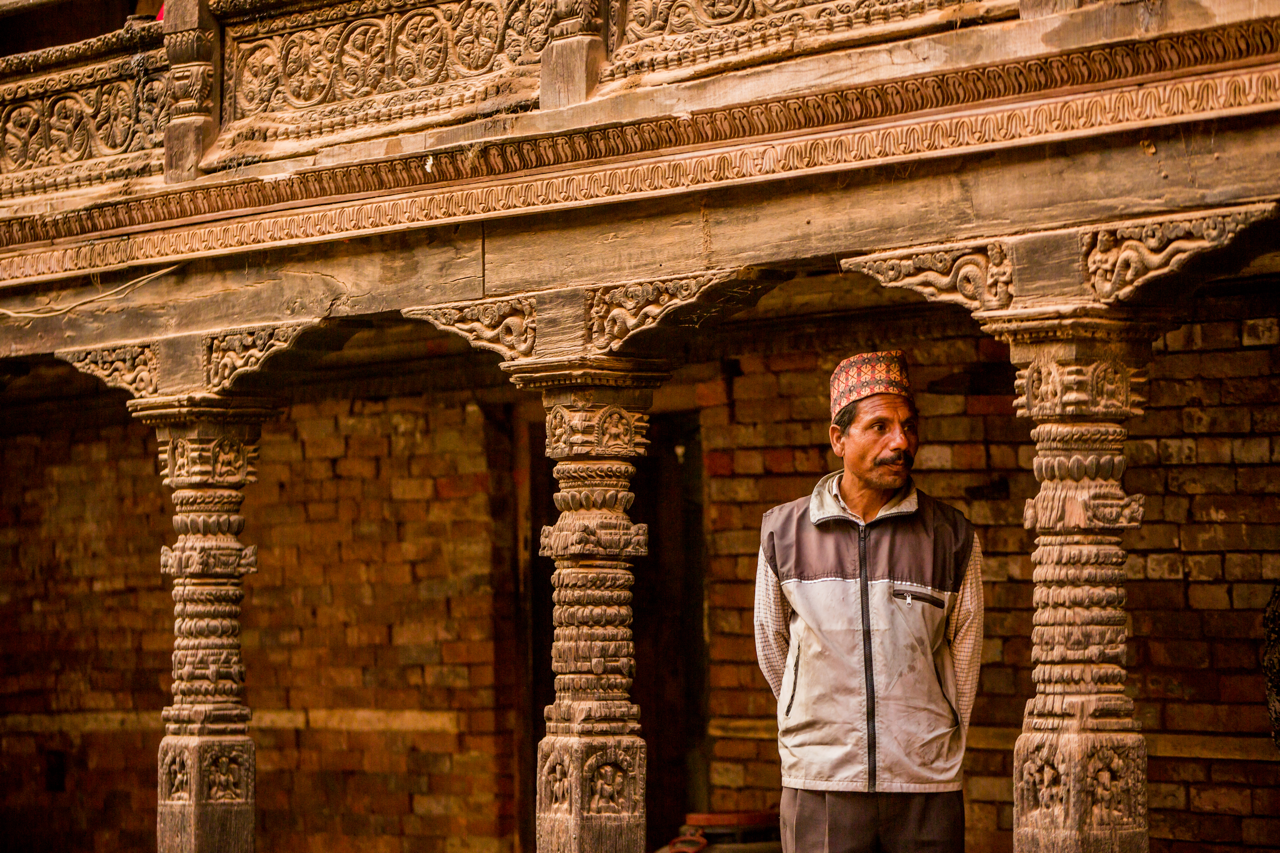

Nepal has maintained ZERO poaching of its endangered animals, including elephants, rhinos and tigers, for the past 12 years.
Nepal has become the world’s gold standard in the fight against poaching and received international accolades for recording zero poaching of rhinos in 2011, 2014, 2016, 2018, 2019, and 2020. The Nepalese government has ensured local communities benefit financially from the country’s parks and ecotourism. The government gives local communities 50 cents of every tourist dollar, making the wildlife more valuable alive than dead.


Mount Everest actually has two other names, Sagarmatha and Chomolungma.
The Royal Geographic Society pronounced the official name "Mount Everest" in 1865, named after Sir George Everest, the Surveyor General, but he did not want the peak named after him, believing it important to use local names. The Nepali word for Everest is Sagarmatha, meaning “forehead of the sky.” Sherpas (which is actually the name of an ethnic group in Eastern Nepal, not just a word for someone who lugs your gear) call it Chomolungma, meaning “Goddess Mother of the World.”




Pokhara is called the “Gateway to the Himalayas” and the starting point of many of the most famous trekking expeditions, but what will grab your attention is the constant swooping of dozens of colorful paragliders filling the skies above you. It is one of the top paragliding locations worldwide, having all the right ingredients: stable thermals, convenient take-off and landing zones, the safety of a large lake for emergency landings and incredible mountain views.
I had a total “James Bond experience when I stayed at the Waterfront Hotel there, jumping off a cliff, gliding around for half an hour doing corkscrew tricks surrounded by hawks, then landing right next to the pool of my hotel, where I took off my parachute and went directly to a lounge chair for a cocktail — no big deal!


Nepal is the birthplace of Lord Gautam Buddha, The founder of Buddhism.
Buddha’s exact birthplace is preserved in Lumbini, Nepal, inside the Maya Devi temple, and because of this, Lumbini in Nepal is the holiest pilgrimage site for Buddhists worldwide.
Boudhanath Stupa is the largest and holiest Tibetan Buddhist temple outside Tibet.
I spent the day with hundreds of monks chanting, playing instruments, wearing ornate headdresses and praying around the stupa’s base. If you are lucky, on certain holy days you can watch the monks elaborately decorate the stupa and participate in the Kora Buddhist prayers by walking clockwise around it, spinning the hundreds of prayer wheels as you go from right to left.





Visit The Hindu City of the Dead.
Death is part of Life at Pashupatinath Temple, The Hindu City of the Dead. This is one of the most sacred Hindu temples dedicated to god Shiva and located on both banks of Bagmati River in Kathmandu. Every year this temple attracts hundreds of elderly followers of Hinduism who seek shelter for the last several weeks of their lives, to meet death, be cremated on the banks of the river, and travel their last journey with the waters of the sacred river Bagmati, which later meets the holy river Ganges. Hinduists from every corner of Nepal and India are arriving here to die or bring their dead.
It is believed that those who die in Pashupatinath Temple are reborn as a human, regardless of their karma. All around the banks of the river you can find brightly painted Sadhus, or holymen who are trying to acquire liberation from the cycle of death and rebirth by meditating and astrologers that can predict the exact day of your death or just read your palm if you prefer not to know. This place is huge, like a city within a city and has been in existence since 400 AD. There is a powerful energy there and at any given time while you are there visiting, you will get the chance to see at least one open air cremation and watch how they prepare the bodies for the cycle of death and rebirth.


Laura Grier
Laura is a dynamic Adventure Photographer, Photo Anthropologist, Travel Writer, and Social Impact Entrepreneur. With a remarkable journey spanning 87 countries and 7 continents, Laura's lens captures both the breathtaking landscapes and the intricate stories of the people she encounters. As a National Geographic artisan catalog photographer, Huffington Post columnist, and founder of Andeana Hats, Laura fuses her love for photography, travel, and social change, leaving an impact on the world.
The Essential Palestine Reading List
Dive into this collection that illuminates the rich tapestry of Palestinian history and culture.
An aerial view of Palestine. CC0
Curated with a respect for the multifaceted narratives of the region, this collection encapsulates an array of perspectives, histories and lived experiences. Each title delves deep into the heart of Palestinian identity, the intricacies of the conflict and the resilient spirit of a people striving for justice and peace.
NON-FICTION
1. They Called Me a Lioness
by Ahed Tamimi and Dena Takruri
Ahed Tamimi, an iconic Palestinian activist, garnered global attention for her fearless activism against the Israeli occupation. Her imprisonment as a teenager after confronting an Israeli soldier in her village of Nabi Saleh turned her into a symbol of Palestinian resistance. This compelling memoir offers a firsthand account of Tamini’s experiences and the ongoing struggle for justice in Palestine, providing profound insight into the realities Palestinians face under occupation.
2. The Ethnic Cleansing of Palestine
by Ilan Pappé
In this seminal work, Ilan Pappé meticulously traces the events of the 1948 Palestinian exodus, revealing the hidden reality of forced displacement and the establishment of Israel. With unflinching detail, Pappé unearths harrowing stories of dispossession and illuminates the profound impact of this historical upheaval on the Palestinian people.
3. Love Is an Ex-Country
by Randa Jarrar
In her memoir, Randa Jarrar fearlessly challenges stereotypes about Muslims and Palestinians. Embarking on a cross-country journey, Jarrar proudly embraces her queer, Muslim, Palestinian and unapologetically confident identity, offering a raw, authentic exploration of the intricacies of life.
4. The Iron Cage: The Story of the Palestinian Struggle for Statehood
by Rashid Khalidi
Historian Rashid Khalidi masterfully dissects the intricate history of Palestinian nationalism and aspirations for statehood. With scholarly precision, Khalidi navigates through decades of political intrigue, chronicling the challenges, setbacks and enduring resilience of a people bent on self-determination and recognition on the world stage.
5. The Hundred Years' War on Palestine
by Rashid Khalidi
Rashid Khalidi's meticulously researched book paints a vivid historical tapestry from the 1800s to the present in this unshrinking account of the assault on Palestinian society.
6. We Are Not Here to Be Bystanders
by Linda Sarsour
Linda Sarsour's memoir portrays her journey from Brooklyn to becoming a powerhouse in activism, stirring profound reflections on solidarity and advocacy.
7. Except for Palestine
by Marc Lamont Hill and Mitchell Plitnick
Marc Lamont Hill and Mitchell Plitnick's critique navigates the inconsistencies within progressive circles, urging universal consistency in advocating for all oppressed communities.
FICTION
1. Mornings in Jenin
by Susan Abulhawa
Susan Abulhawa crafts a poignant, multigenerational narrative that traverses the emotional terrain of a Palestinian family's journey through displacement and loss. Through exquisite storytelling, Abulhawa offers a deeply moving portrayal of resilience amid a tumultuous landscape of conflict and highlights the enduring spirit of the Palestinian people.
2. The Tiny Journalist: Poems
by Naomi Shihab Nye
Naomi Shihab Nye, the esteemed Palestinian-American poet, weaves poetic wonders inspired by Janna Jihad Ayyad, Palestine's youngest journalist. Ayyad, capturing anti-occupation protests at the age of seven using her mom's smartphone, becomes Nye's muse in this must-read collection.
3. You Exist Too Much
by Zaina Arafat
Zaina Arafat's debut novel is a transcontinental tale which oscillates between the United States and the Middle East. A fresh voice in Palestinian-American literature, Arafat artfully dismantles Israel’s pinkwashing while unraveling the complexities of Palestinian society for diverse readers.
4. Enter Ghost
by Isabella Hammad
Isabella Hammad's evocative narrative navigates modern-day Palestine, delving into the artist's struggles amid diaspora, displacement, and the shadow of occupation.
5. Evil Eye
by Etaf Rum
Etaf Rum's exploration of womanhood as a Palestinian American is a profound journey through intergenerational trauma, clashes of culture and labyrinthian family dynamics.
6. Salt House
by Hala Alyan
Set in the aftermath of Israel’s conquest of the West Bank and Gaza in the 1967 Six-Day War, "Salt Houses" chronicles a Palestinian family's odyssey from their homeland to Kuwait, painting a poignant legacy of longing and displacement passed through generations.
7. Mother of Strangers
by Suad Amiry
"Mother of Strangers" presents a cinematic love story against the backdrop of the Nakba in Jaffa, weaving themes of love, loss, and a nation's upheaval.
Raeann Mason
Raeann is a traveler, digital storyteller, and guide writer, with a degree in Mass Communication & Media from the Walter Cronkite School of Journalism. She is passionate about a/effective journalism and cultural exchange, and is an advocate of international solidarity and people's liberation. Her work at CATALYST PLANET focuses on reshaping the culture of travel and hospitality to be more ethically sound and sustainable
What India’s Successful Moon Landing Means for Space Exploration
India is now the fourth country to land on the moon, and its lunar rover is making some big waves in space exploration.
The Chandrayaan-3 lunar exploration craft was launched from the south of India on July 14. Sky News. CC BY-SA-NC 2.0
On August 23, the Indian Space Research Organization (ISRO) landed its Chandrayaan-3 craft near the moon’s south pole, marking both the country’s first ever moon landing and the world’s first on that specific lunar region. Not only has this achievement finally placed India among the ranks of other space exploring nations, but has also made it one of only four countries to land a craft on the moon. The location of the craft’s landing near the unexplored south pole is significant given the multiple failed attempts by other nations to do just that in the past and stake a claim to lead future research in the area. Chandrayaan-3’s successful landing will hopefully cement the credibility of the ISRO on the international playing field and allow for continued collaboration with other foreign space agencies. During its two-week lifespan, the rover investigated the existence of frozen water deposits beneath the surface of the moon, and has made a number of surprising discoveries that orbiting crafts were unable to.
A digital rendering of the Chandrayaan-3 craft and its lunar rover. NDTV. CC BY-NC 2.0
While India’s space program was first established in 1962, it took another decade or two for the ISRO to really pick up steam. Many of the first projects involved sending satellites up into Earth’s orbit in order to map and survey the country from above, bringing telemedical and communication services to communities in remote regions. Chandrayaan, a Sanskrit term meaning “mooncraft,” is the name of India’s lunar exploration program, which made its debut between 2008 and 2009 with the Chandrayaan-1 lunar space probe, which found water deposits on the moon using various mapping techniques and reflection radiation. The next craft, launched in 2019, was comprised of an orbiter, moon lander and rover, and was actually intended to be the first to land on the south pole of the moon, but after successfully entering lunar orbit, the ISRO lost communication with the landing craft and rover before touchdown.
Chandrayaan-3 is therefore the culmination of more than a decade of scientific research and technological development and is undoubtedly the crown jewel in India’s space program. The probe was launched on July 14 from Sriharikota Range, the country’s largest launch site located in the southern state of Andhra Pradesh, and successfully touched down on the moon on August 23. Unlike its recent predecessor, the Chandrayaan-3 traveled without an orbiter module, further cementing its intention to land on the moon and conduct experiments in situ. Additionally, while this craft was unambiguously an Indian project and creation, some of the technology on board resulted from various collaborations between the ISRO, NASA and the European Space Agency (ESA), proving once again the importance and benefits of scientific collaboration.
Students in India watch a video explaining the lunar mission. Al Jazeera. CC BY-NC-ND 2.0
Aside from proving that landing on the south pole of the moon is indeed possible, the information sent back by the Chandrayaan-3 rover has already resulted in some groundbreaking discoveries about the moon. One such finding has to do with understanding the temperature of lunar soil, an important factor when considering building long-lasting structures or even settlements on the moon. The Indian rover is equipped with a temperature probe that can reach nearly four inches (10 cm) beneath the surface, and found that the temperature drops 140ºF (60ºC) at a depth of just roughly 3.14 inches (8 cm). This has provided an updated and more accurate reading as compared to the data currently in use from NASA’s 2009 Lunar Reconnaissance mission, which lacked precision because it was an orbiter and therefore not actually on the lunar surface. Another interesting discovery took place in the form of a series of strange vibrations detected by the rover’s seismograph: scientists have suspected it as being a minor moonquake, although further exploration and longer-term observations would need to confirm this.
While these scientific discoveries are of course extremely significant and promising for the future of lunar exploration and research, the Chandrayaan-3 project also set a historic precedent in terms of the budget they used to complete this mission. The ISRO has a long held reputation amongst international space research circles for their ability to work on limited funds, at least compared to other major space exploration agencies. NASA, for example, has a $25.4 billion budget for the current fiscal year, while the ISRO received a measly $1.5 billion from the Indian government for the fiscal year ending this March by comparison. If that wasn’t enough, the ISRO actually spent 25% less than what it had been allocated. The Chandrayaan-3 mission cost a total of $74.3 million USD, ironically less than half of the budget that director Christopher Nolan had to make Interstellar, his award winning film about space travel.
The actual Chandrayaan-3 craft before it was launched into space. The Week. CC BY-SA 2.0
In addition to finally taking its place amongst the other lunar landing nations, Chandrayaan-3 has opened countless doors for both the ISRO and the space exploration community as a whole. Going forward, the example that this mission has set with regards to the resources it used as well as through the international collaboration it benefitted from. The moon’s south pole has now been unequivocally proven accessible and investigable, new information about lunar composition has been brought to light, and like all other missions into space, has helped to deepen our understanding of both the universe and ourselves.
Tanaya Vohra
Tanaya is an undergraduate student pursuing a major in Public Health at the University of Chicago. She's lived in Asia, Europe and North America and wants to share her love of travel and exploring new cultures through her writing.
An LGBTQ+ Wedding in India Challenges Sikh Tradition
Criticism of a same-sex Indian wedding in Punjab inspires advocacy for LGBTQ+ rights.
LGBTQ+ Protest in India. Ramesh Lalwani. CC BY 2.0
On 18 September, Dimple and Manisha — a same-sex couple — were married in a Sikh temple in the northern state of Punjab, India. Currently, same-sex marriages are not recognized by the Indian legal system because of the country’s laws that define marriage as the union between a man and woman. Because of this, the wedding has been declared, “unnatural and contrary to Sikh ethics,” by priest Giani Raghbir Singh, despite adherence to all the traditional Sikh rituals between a bride and groom. The event has made headlines in the northern state of Punjab, where it has resonated with those advocating for LGBTQ+ rights.
The wedding has been criticized by some religious leaders who believe that despite a commitment to Sikh traditions, the union is ultimately a “severe moral and religious violation.” This has sparked controversy with LGBTQ+ activists who, in the last decade, have made significant advances in extending LGBTQ+ rights. In 2018, India’s highest court overturned the criminalization of same-sex relations, a major milestone for the LGBTQ+ community that helped to reduce both legal and social discrimination. However, the central government still remains opposed to same-sex marriage, and is supported in this by many of the country’s major religious lobby groups — Hindu, Muslim, Christian and Sikh. Important Sikh religious leaders in the past have described homosexuality as, “against the Sikh religion,” and “totally against the laws of nature.”
Echoing these beliefs, Sikhism’s highest priest, Giani Raghbir Singh, found that the union between the two women was in violation of the religious code of conduct. Priest Hardev Singh, who conducted the marriage, has been removed from his position and may face more punitive measures for his involvement. However, Dimple, as a practicing Sikh, insisted he marry following Sikh rituals. The couple had a traditional wedding; Dimple dressed in traditional Sikh garb with customary flowers on his turban while Manisha wore a tunic, salwar bottoms, a silk scarf and red bangles. Because of the dedication of the couple to being married in a traditional Sikh ceremony, the reaction that they’ve received has left a bit of a blurred line between whether there is opposition to the LGBTQ+ community or traditions that it deviates from.
The overturning of section 377, a colonial-era law that categorized gay sex as an “unnatural offense,” was been most contested by religious groups. The judges involved in overturning this judgment have made statements reading that, “Criminalizing carnal intercourse is irrational, arbitrary, and manifestly unconstitutional,” while religious organizations have found the ruling to be shameful. Similar to India, Uganda has similar laws that date back to the colonial period. More recently, Ugandan president Yoweri Museveni signed the Anti-homosexuality act criminalizing same-sex conduct, which punishes offenders with life imprisonment or the death penalty for “aggravated homosexuality.” At All Saints’ Cathedral in Kampala, homosexuality is viewed as a sin that is against the “order of God.” Museveni, rooted in his Anglican faith, says the law prescribes rehabilitation for homosexuals to change their sexual orientation. Unlike Uganda, India appears to be more progressive in its approach to LGBTQ+ rights, especially in the marriage of Dimple and Manisha. Their wedding has not been deemed a felony, and although it is being investigated on the basis of religious violations that may invalidate the legitimacy of the marriage, the couple will not be condemned to prison or death.
Currently in the process of hearing arguments in favor of same-sex marriage, India has seen petitions regarding the Special Marriage Act of 1954. This act was amended to allow for marriage between couples from different castes or religions and petitioners have argued that it can be extended to LGBTQ+ citizens. However, the Modi government still argues that same-sex marriage represents an “urban elitist view” and has to keep in mind the views of religious denominations before making a decisive decision. The influence of religious traditions in India has been a significant factor contributing to the issues faced in the process of legalizing some LGBTQ+ rights, highlighting the indistinct line drawn between beliefs and social progress.
Mira White
Mira is a student at Brown University studying international and public affairs. Passionate about travel and language learning, she is eager to visit each continent to better understand the world and the people across it. In her free time she perfects her French, hoping to someday live in France working as a freelance journalist or in international affairs.



